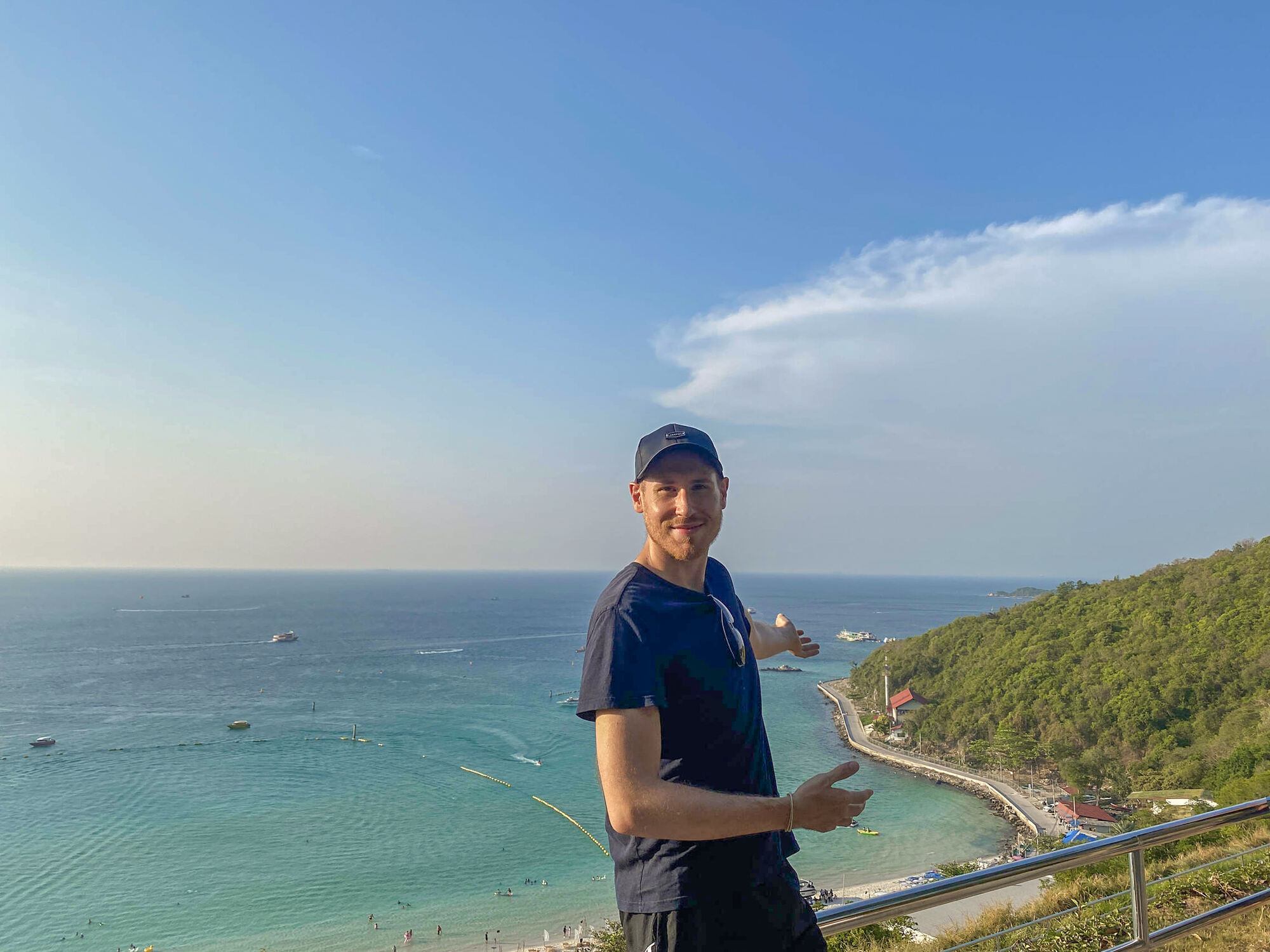Are you planning a trip to Poland and unsure which landmarks to visit? With so many historical, cultural, and natural attractions to choose from, it can be difficult to decide.
That’s why I’ve created a list of the 25 famous landmarks in Poland you must visit during your vacation. These stunning and iconic landmarks reflect Poland’s rich and diverse cultural heritage that has influenced the world’s history and art.
On this list, we have included the impressive Gdansk Old Town, the historic salt mines in Wieliczka, and the St. Mary’s Church in Gdansk, and the breathtaking Tatra Mountains. These places offer a glimpse of Poland’s dynamic culture, its proud traditions, and its unique place in the world.
So pack your bags and get ready to explore the 25 most famous Polish landmarks, I can’t wait to tell you more!
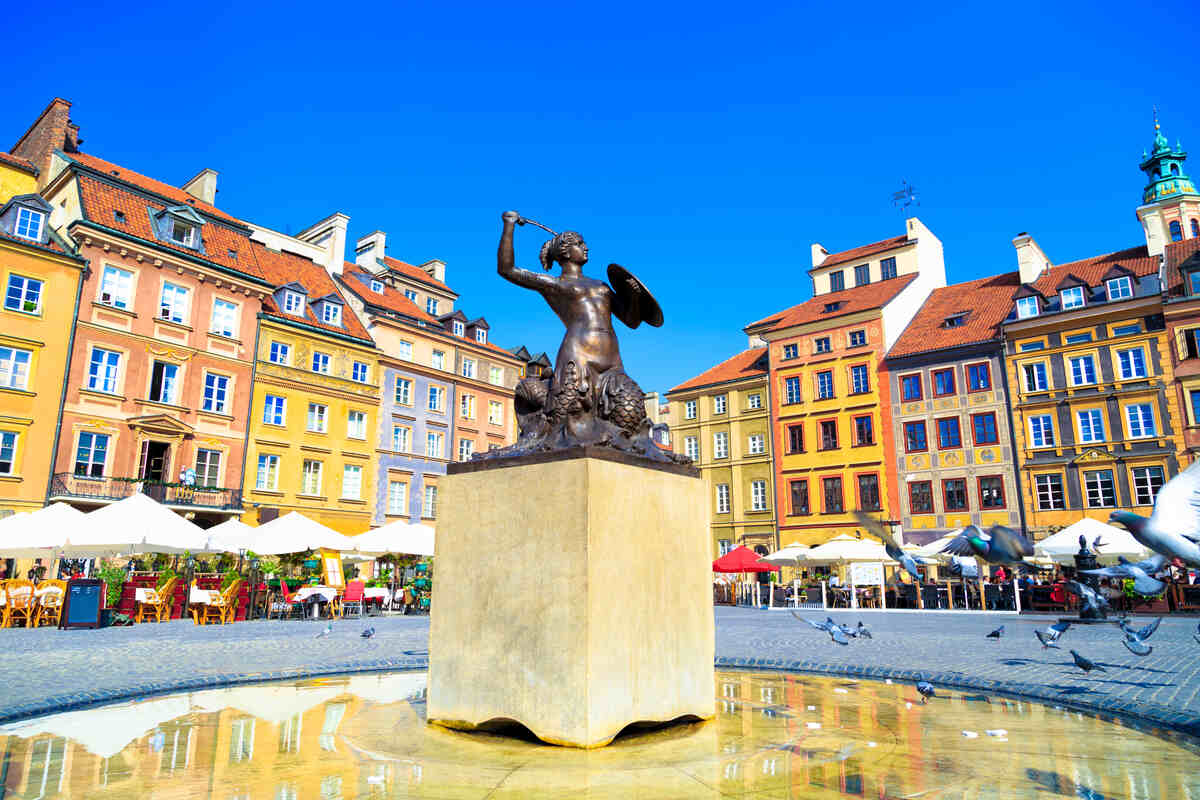
Table of Contents ⬇️
Toggle25 Famous Landmarks in Poland
Poland is a country with a rich cultural heritage, fascinating history and stunning natural landscapes. In this section, we will take a closer look at the 25 most famous landmarks in Poland that every traveler must visit.
From magnificent castles and ancient churches to charming towns and breathtaking mountains, each of these landmarks tells a unique story and highlights Poland’s significance in the world’s history and art.
Make sure to read until the end before planning your trip to Warsaw or Krakow. Let’s get started!
St. Mary’s Church in Krakow
Starting this list is the historic and architecturally captivating St. Mary’s Church in Krakow. As one of Poland’s most renowned historical landmarks ever, this stunning Gothic church is worth a visit.
St. Mary’s Church has been a focal point of the city since the 14th century when King Casimir III The Great built it.
The church was originally called St. Mary’s Basilica, but over the centuries, its name changed to St. Mary’s Church as it became associated with a variety of Catholic religious customs that were held on its grounds.
The exterior and interior boast intricate details, including magnificent stained-glass windows and a majestic altarpiece. The grandeur and opulence of St. Mary’s Church is truly captivating.
Located just off the bustling central square, it’s easy to work a visit into any Krakow itinerary. Don’t miss out on this unforgettable landmark.
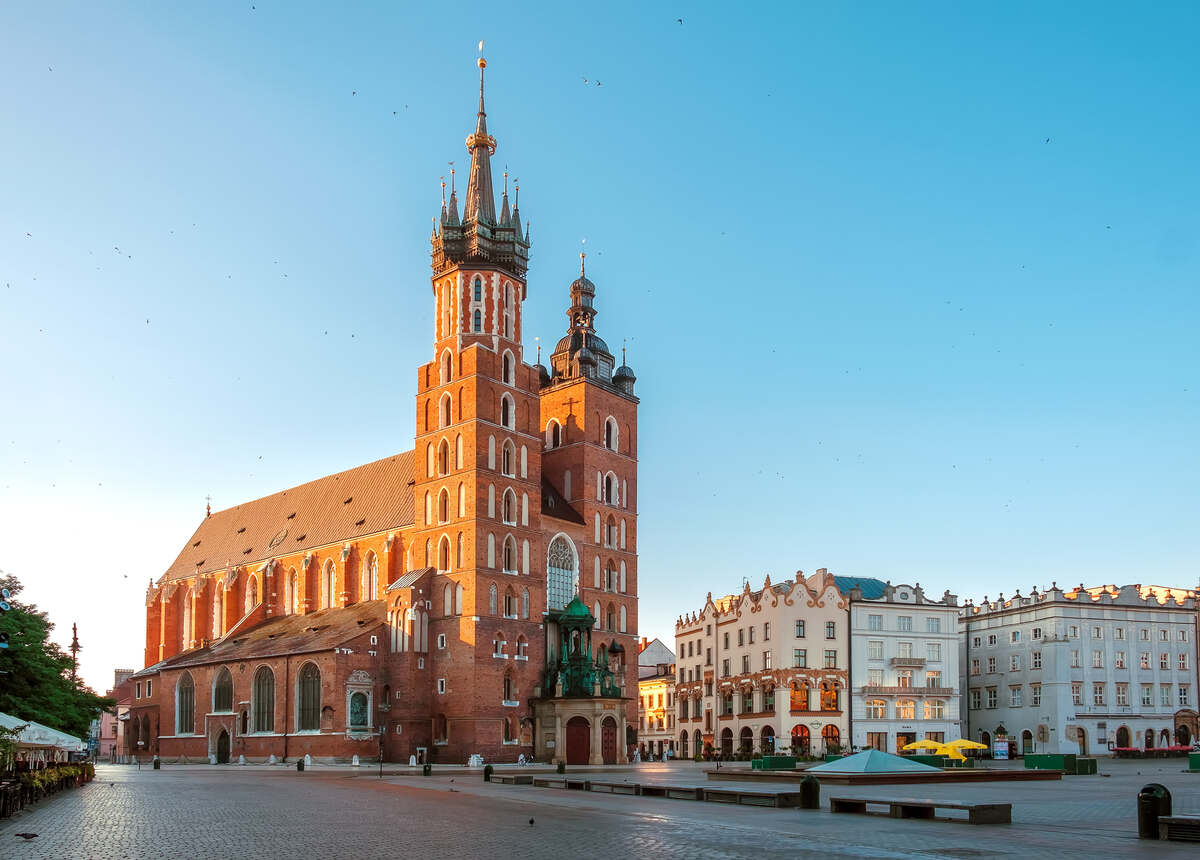
Old Town Market Square, Krakow
The Main Square, which is also called Main Market Square, is the largest mediaeval plaza in Europe and one of the best things to see in Krakow. It is amazing that it is 40,000 square meters big.
The Rynek Glówny, which means “Main Market Square” in Polish, was built in 1257. It is considered the city center of Kraków and is important from a historical, cultural, and social point of view.
Traders would bring their goods here to sell them for hundreds of years. And it has been a quiet spectator at many events, ceremonies, and public executions. During the time that Germany controlled the area, the square was called Adolf Hitler Platz.
The most important piece of history in Kraków is the Main Market Square. It’s worth seeing both during the day and at night when its lively atmosphere and charming bars and restaurants in the open air are at their best. At night, the Cloth Hall and the buildings on either side of the square are beautifully lit up. Many people think it is one of the most romantic places in Kraków.
If you go to the square right before the hour changes, you can hear the “Hejnal Mariacki” bugle call from St. Mary’s Church.
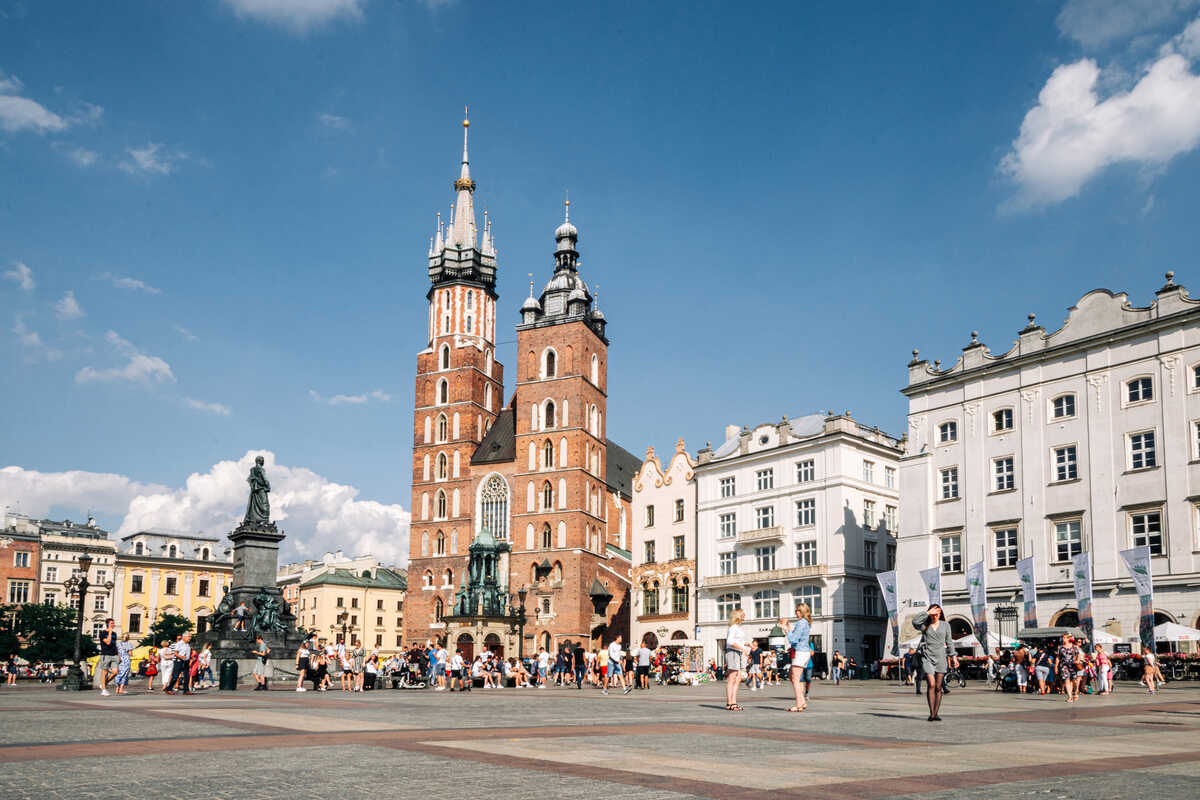
The Auschwitz-Birkenau Memorial and Museum
The Auschwitz-Birkenau Memorial and Museum is a museum on the grounds of the largest Nazi concentration and extermination center, Auschwitz.
Located near the small municipality of Owicim (better known by its German name, Auschwitz), between 1940 and 1945, more than 1.5 million people were executed here.
The Auschwitz-Birkenau Memorial and Museum is currently located in the Auschwitz garrison, while Birkenau has been preserved in its post-liberation state. The two concentration centers are now prominent Holocaust memorials.
The Auschwitz Museum contains tens of thousands of artifacts with distinctive qualities, meanings, and symbols.
The museum’s collection includes thousands of pairs of shoes, 3,800 pieces of luggage, 2,100 of which bear the owners’ names, over 12,000 culinary implements, 470 prostheses and orthoses, 397 pieces of striped camp clothing, and approximately 4,100 works of art.
The items that belonged to the captives, such as their clothing, signet rings made in captivity, and handmade figurines, are the eeriest. The Auschwitz Museum also contains objects from the SS Garrison responsible for the mass extermination.
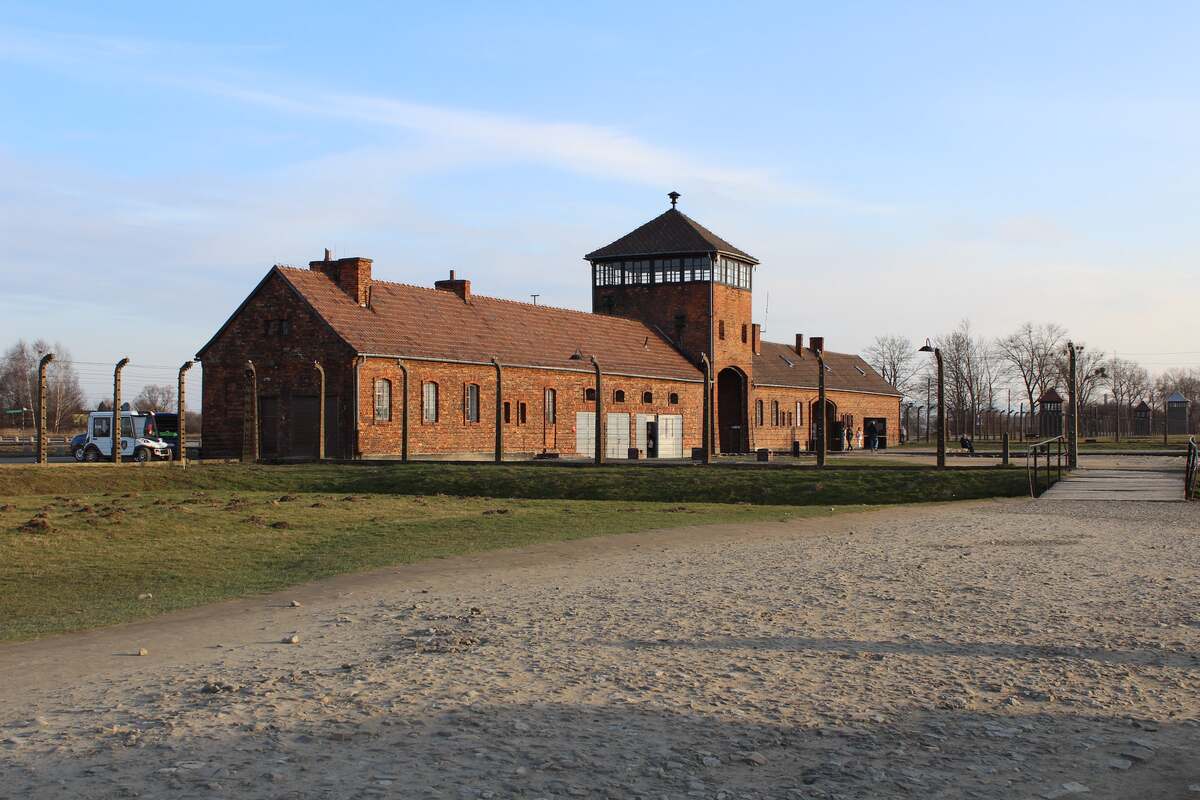
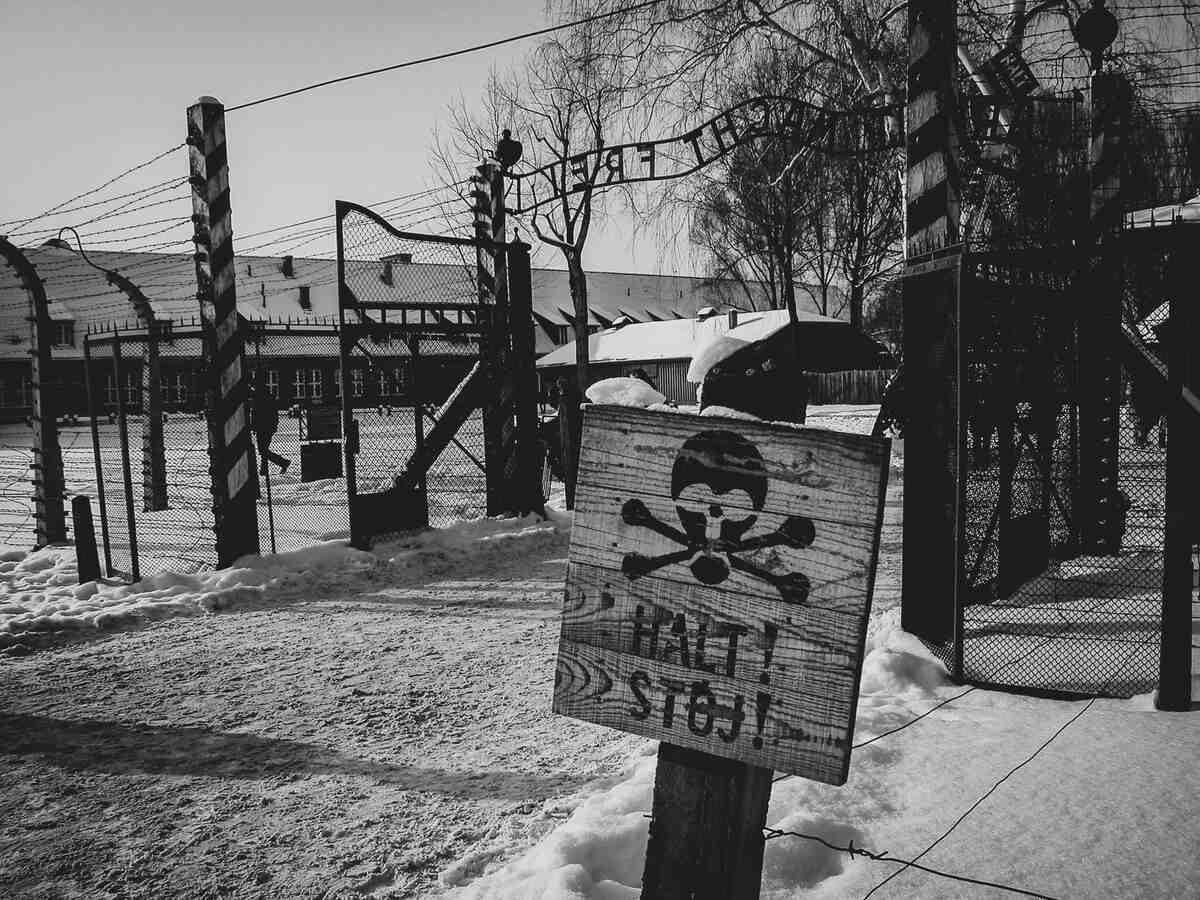
Wawel Royal Castle, Krakow
The Wawel Royal Castle, located in the city’s historic district, was constructed for the Polish nobility in the 1600s but was devastated during the war. Royal grounds were not completed until 2019. The structure was renovated between 1971 and 1988.
Besides its historical value, this landmark is also used for contemporary Polish official events and as a classroom.
Oriental rugs, coins, ancient furnishings, statues, and artwork fill the castle’s many rooms.
The imperial grounds are equally stunning. Beautiful statuary, sculptures, plants, waterfalls, seats, and vases can be found throughout the upper and lower gardens’ combined 2 hectares of space.
Bring a lunch and spend the day birdwatching the area’s blackbirds, nightingales, and magpies.
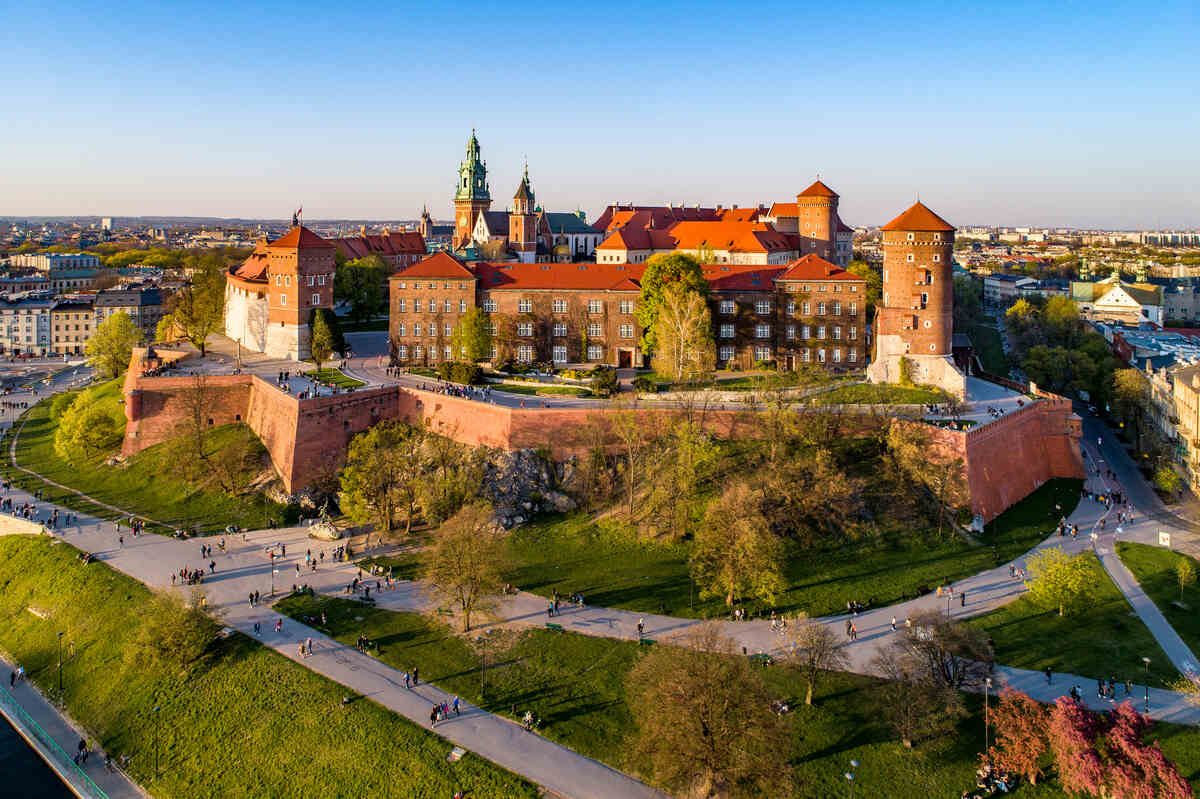
Gdansk Main Town Hall
Gdańsk, a city on the Baltic Sea in northern Poland, is not the most popular tourist destination in the country, but it should be. There are museums, excellent eateries, beaches, contemporary art here, and palaces to explore in this city rich in history.
Originally designed in a classically German style, the city was reconstructed after World War II with heavy Dutch and French impact.
The first thing to do is to stroll along the Long Market, a broad street lined with brightly colored buildings housing cute stores, cozy cafés, and age-old eating establishments. Travel to the city’s famous landmark former town hall and ascend its turret for a birds-eye perspective.
It’s worth noting that the Gdańsk History Museum is located within the city hall itself.
After visiting the Museum of the Second World War, continue on to St. Mary’s Church, one of the biggest masonry cathedrals in the world. Enjoy dinner at dusk while gazing at the picturesque Polish architecture along the shoreline.
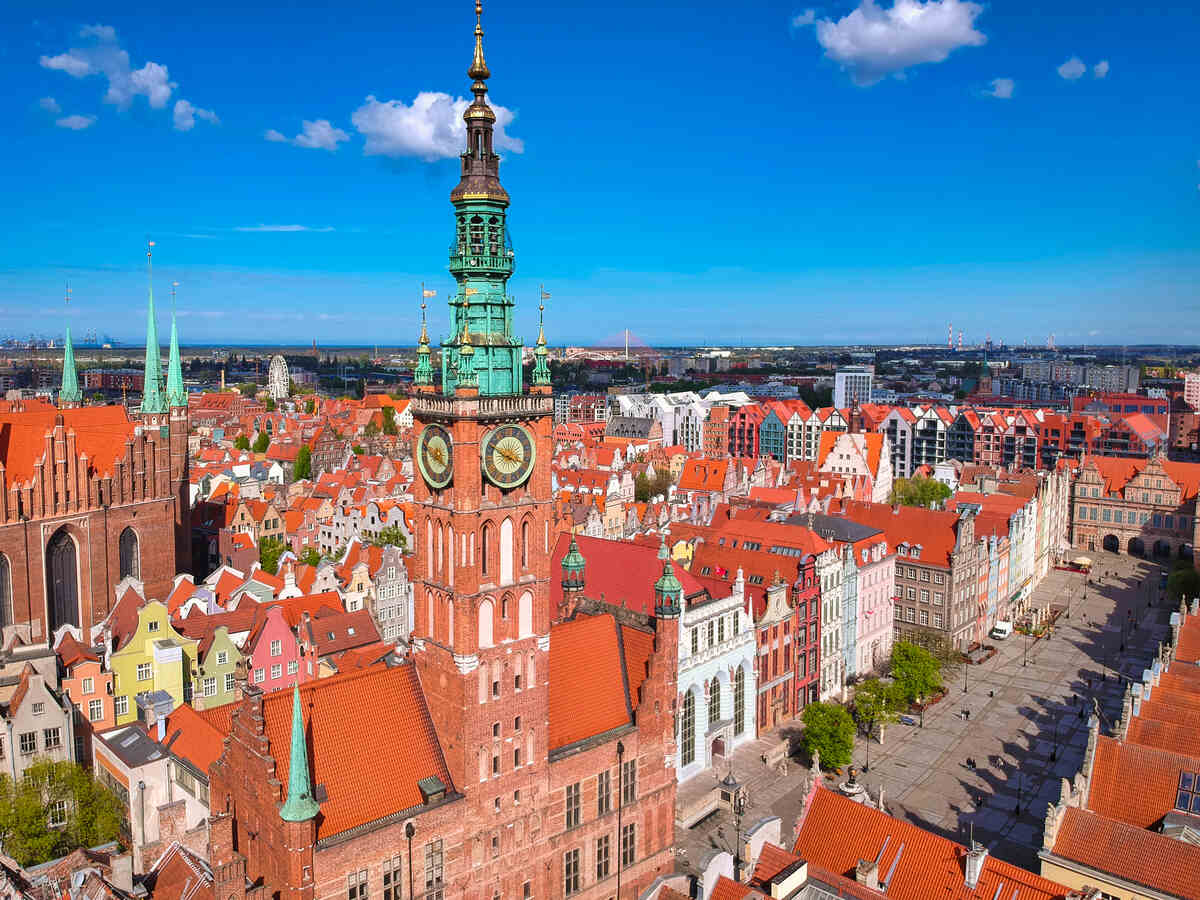
Torun Old Town Centre
Among the finest cultural and historical tourist destinations in Poland, this metropolis dates back to 1233. Thorn’s old town is where you want to be to experience the best of the city’s historic architecture, bars, and eateries, as well as its many notable monuments.
Town Square, Memorial of Nicolaus Copernicus, Old Town Hall, and the main plaza are some of the top things to see and do in this historic district.
One of the best-known buildings in Poland, the Old Town Hall dates back to 1274 and now houses a museum and a turret with panoramic views of the city below.
It’s also of Europe’s most attractive medieval towns, it features Gothic architecture, colorful stores, and red brick structures. All in all, it’s definitely one of the most famous natural landmarks in Poland you should visit!
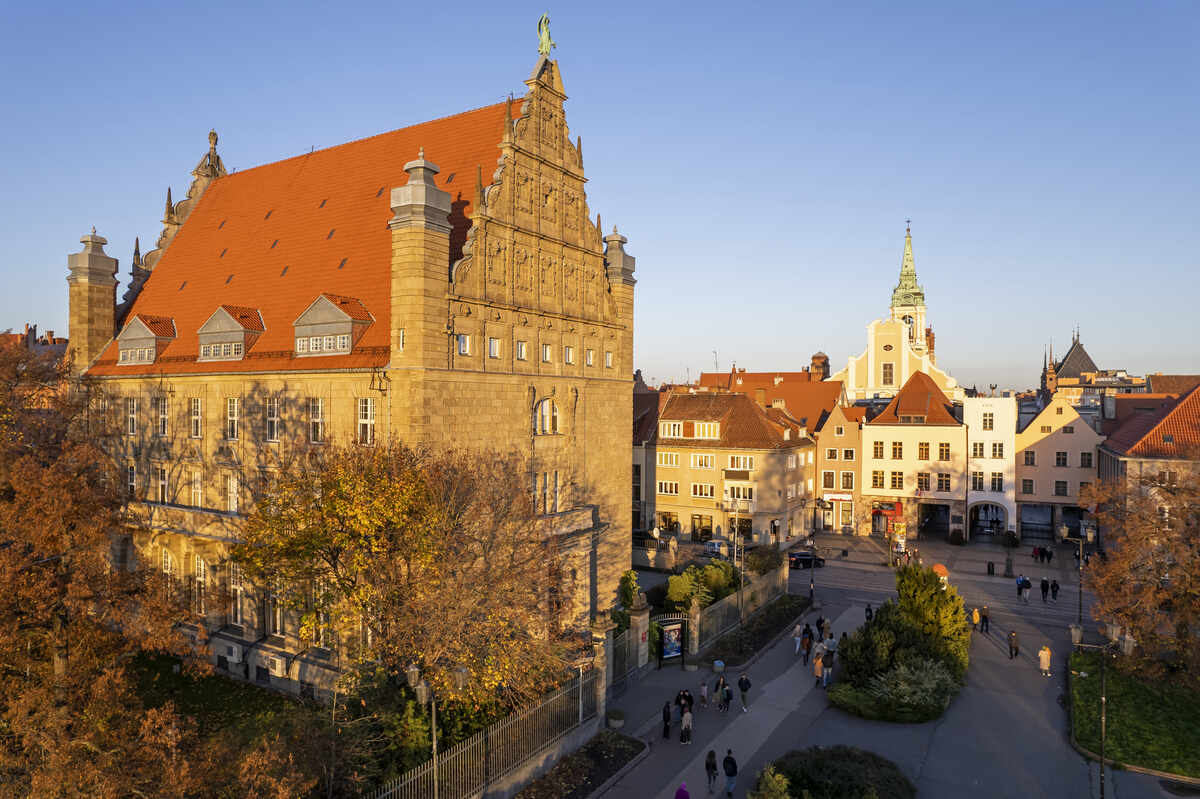
Wieliczka Salt Mine
It’s safe to say this is one of the best sights in all of Poland. Seven hundred years old, with nine stories and twenty-six tunnels, and a depth of 327 meters, this structure is a UNESCO World Heritage Site.
It used to be an industrial facility, but it has been renovated into a popular tourist destination and health resort in recent years. The Wieliczka Salt Mine is home to a mystical vibe that bridges the gap between breathtaking scenery and cutting-edge design.
Experience a natural formation that is unlike any other in the world as you wander through the salt caves on a guided walk. Stay for a diagnostic test or therapy treatment if you’re experiencing health issues that require it.
It is said that spending time beneath in the Eastern Mountain Stable Chamber, where the cost of a night’s stay is only $30, can boost your immune system because of the filtered air you’ll be inhaling.
Visit the gift store on your way out to pick up some one-of-a-kind mementos like Wieliczka salt, soap with salt crystals, Lemon Grass & Pear toiletries, and rock salt infused with garlic bulbs.
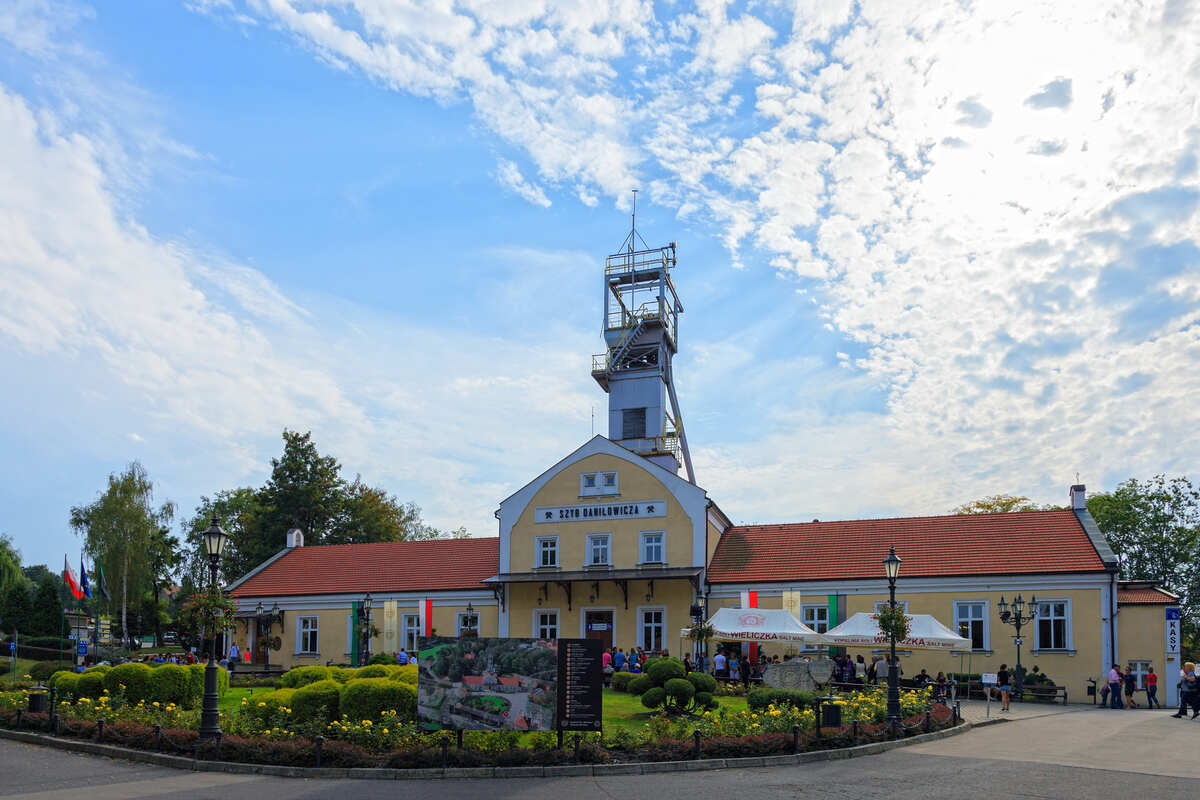
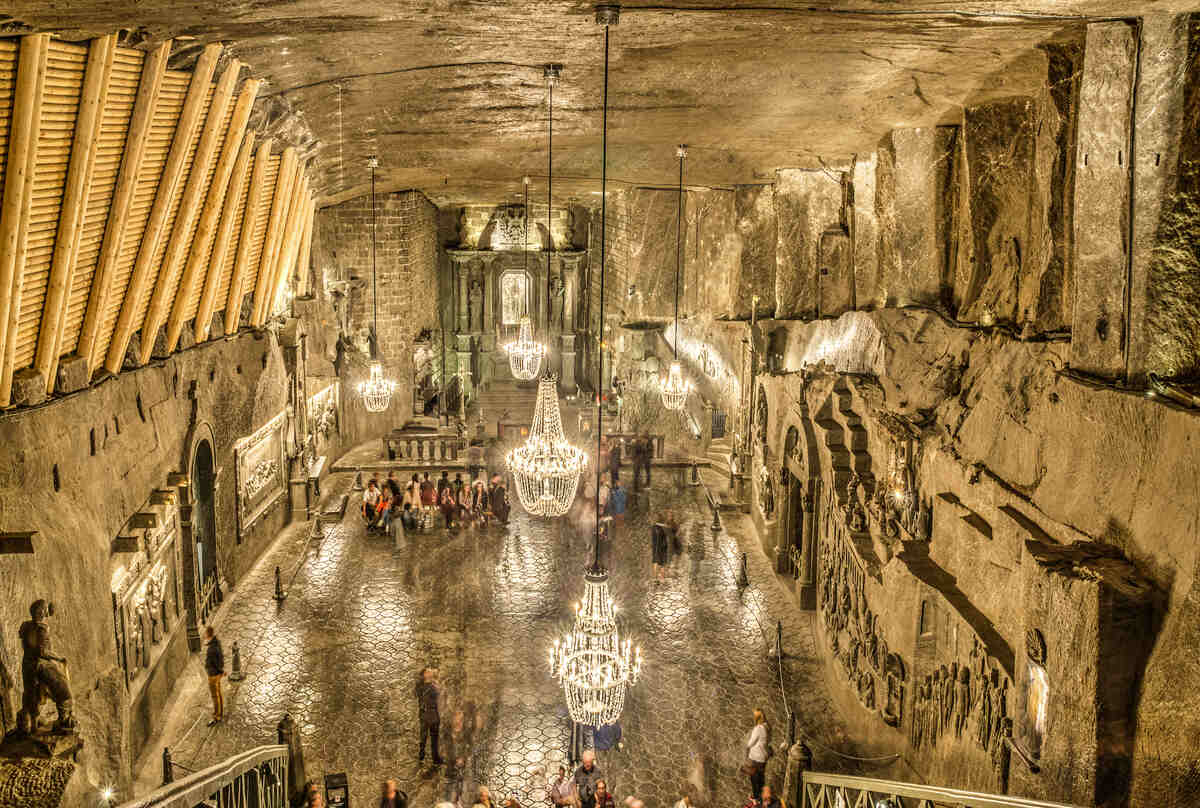
Malbork Castle
The Malbork Castle, one of the most recognizable and famous landmarks in Poland, is a massive fortress that has withstood the test of time. Completed in the 14th century, it required extensive reconstruction after suffering harm during World War II.
This royal complex of three fortresses is a UNESCO World Heritage Site and a major tourism draw.
Enjoy the Polish culture, history, and stunning scenery at the Marlbork Palace. Night tours are arguably the finest, with glowing lights lighting the brick red walls and the guide costumed as a medieval warrior, and tickets cost about $4.
Throughout the journey around the Malbork Castle, you’ll get to see numerous displays, including military quarters, artwork, vast gardens, tapestries, armor chambers, pottery, lengthy passageways, and antique furnishings and relics.
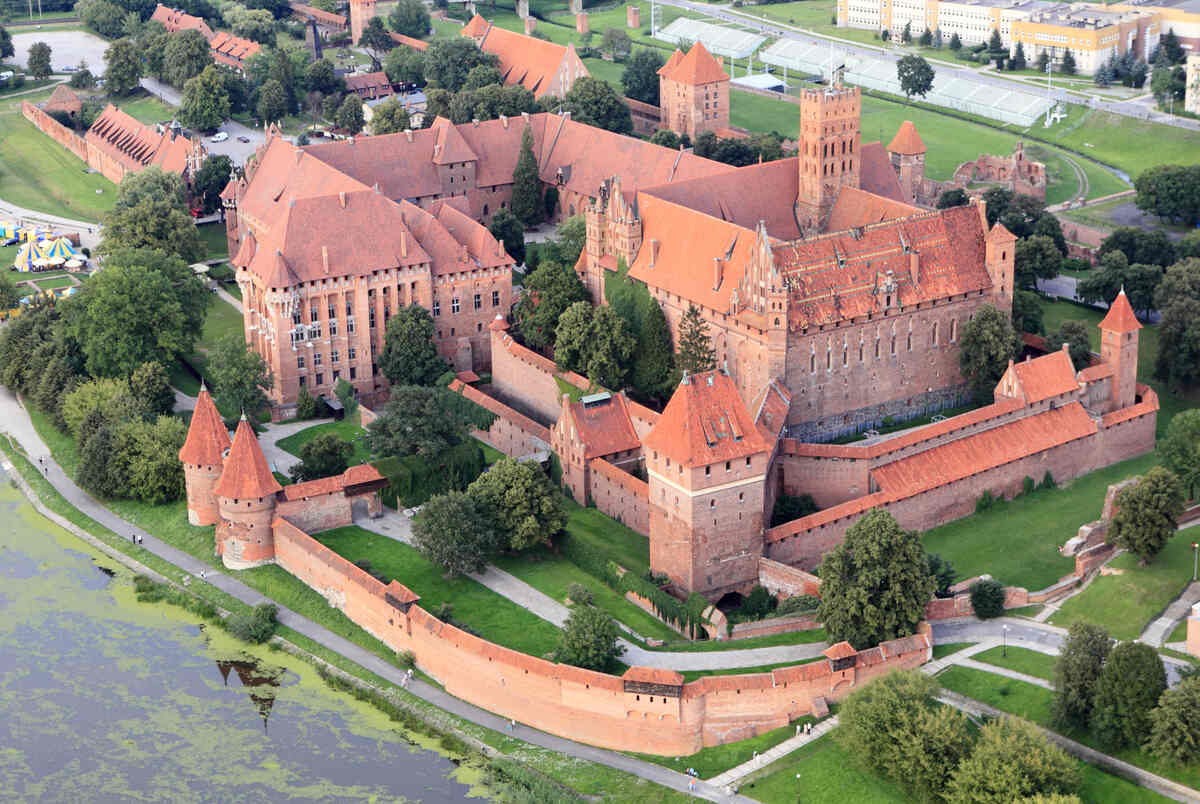
Swinoujscie Lighthouse
This lighthouse, which was built in the late 1800s, is one of the most popular things to do in Swinoujscie. Right next to the lighthouse is the Lighthouse and Maritime Rescue Museum.
It was built at the eastern end of the breakwater that protects the harbor entrance. It took three years to build, and the first light went on on December 1, 1875. At the time it was built, its height of 68 meters was a great building achievement.
It was the tallest building and lighthouse on the Polish coast and the Baltic Sea until modern times. It is still one of the tallest buildings in the world.
A building right next to the lighthouse is home to the Lighthouse and Maritime Rescue Museum.
It is open every day of the year and has a lot of interesting things to see, like a 70-kilogram diving suit with two 12-kilogram bottles and a 4.2kW light bulb that was used in the lighthouse. There are old fishing boats in front of the building.
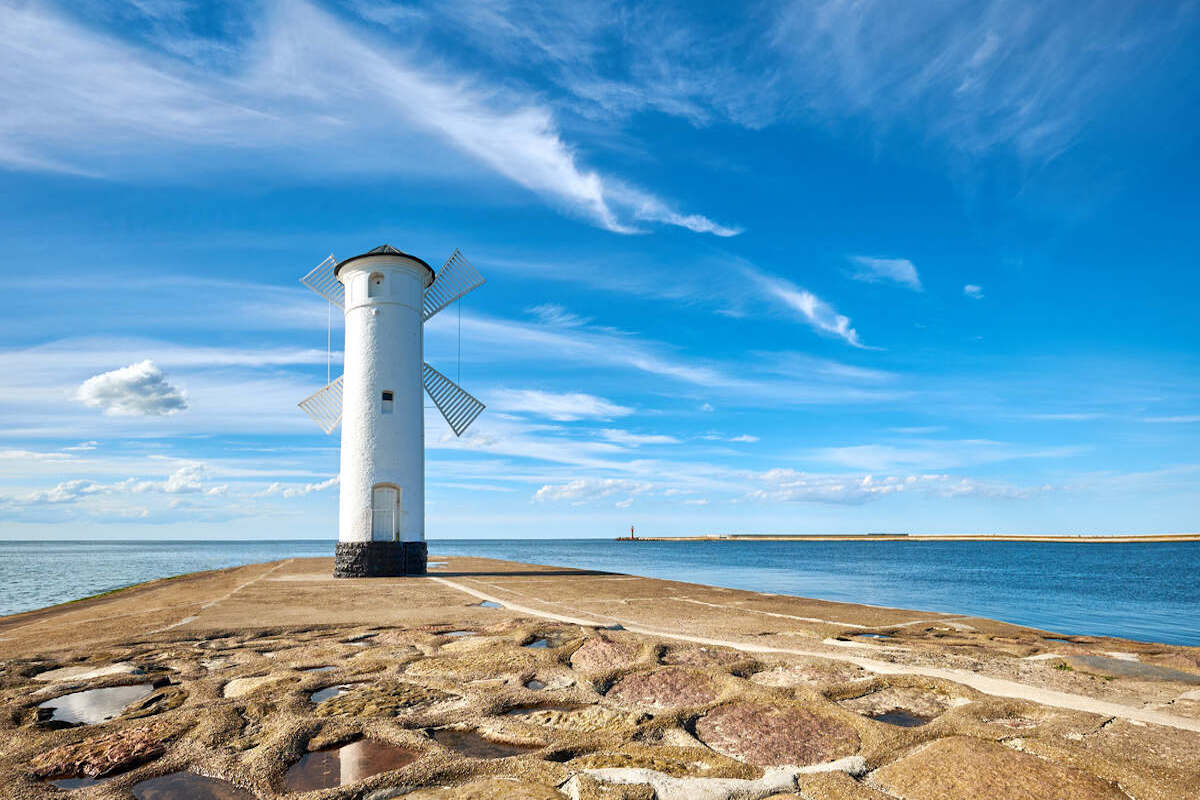
Nowy Sacz City Hall Tower
Nowy Scz is an old town in a valley between hills that is growing and changing quickly. It still looks like it did in the Middle Ages, with a big town square.
Not far from the town square is the Gothic St. Margaret’s Church, built between the 13th and 14th centuries, and the beautiful “Dom Gotycki” (Gothic House), which is now a museum. From the town castle, only one tower and a few pieces of the wall remain.
You could also go to the synagogue, which was built in 1746. It is one of the few reminders of a time when many Jews were living in the area.
On the outskirts of Nowy Scz, there is a beautiful outdoor art museum called the Ethnographical Park. It covers 20 hectares of land and has historical buildings made in the style of the area.
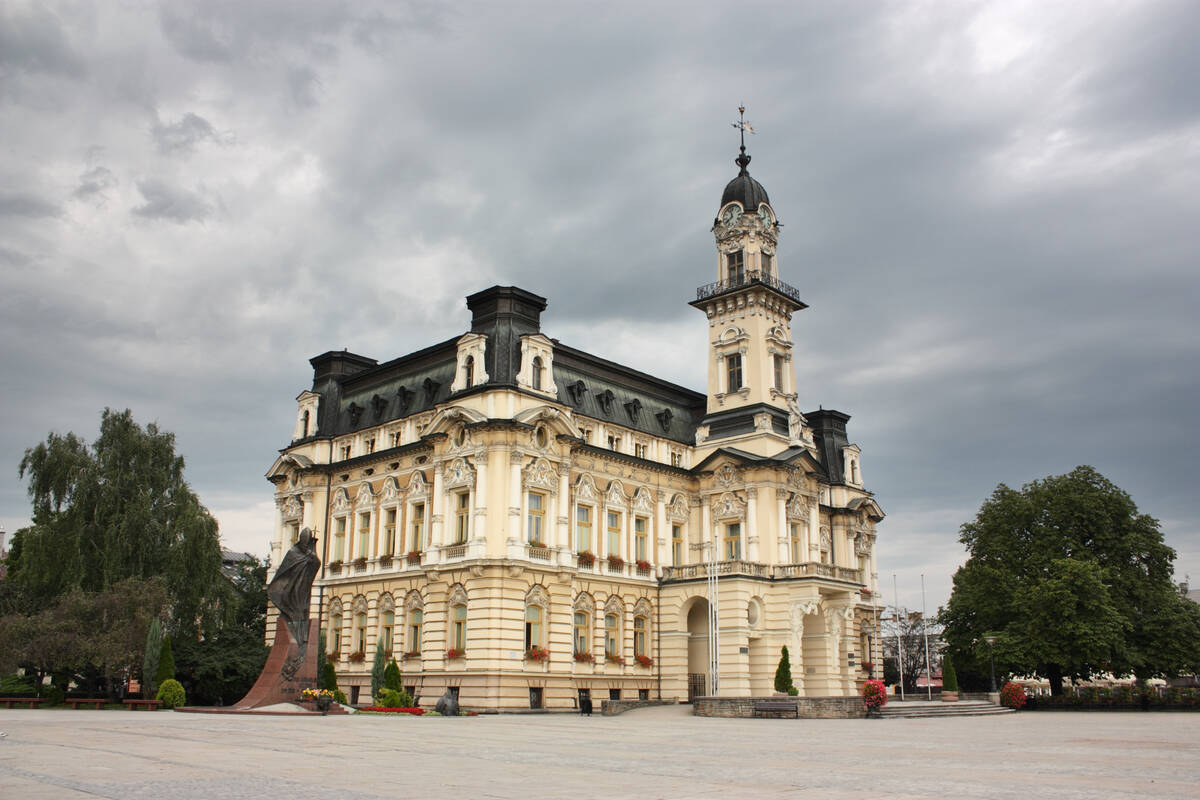
Tatra National Park
The Tatra National Park is the finest location to enjoy nature in both Slovakia and Poland. There are raptors, bears, and marmots in the Tatra Mountains, as well as high-altitude vegetation and beautiful blooms.
This park is home to over a hundred mountain lakes, dozens of cascading waterfalls, and miles of trekking paths.
Morskie Oko, as was stated previously, is the finest lake in the area. Likewise, the alpine meadow of Hala Gasienicow and the grotto of Jaskinia Mylna can be found on the Polish side of the mountain.
The ascent of Rysy, Poland’s tallest peak, is the most well-known trek in the region. It’s a 14-mile hike, but the summit is worth it for the breathtaking panoramas.
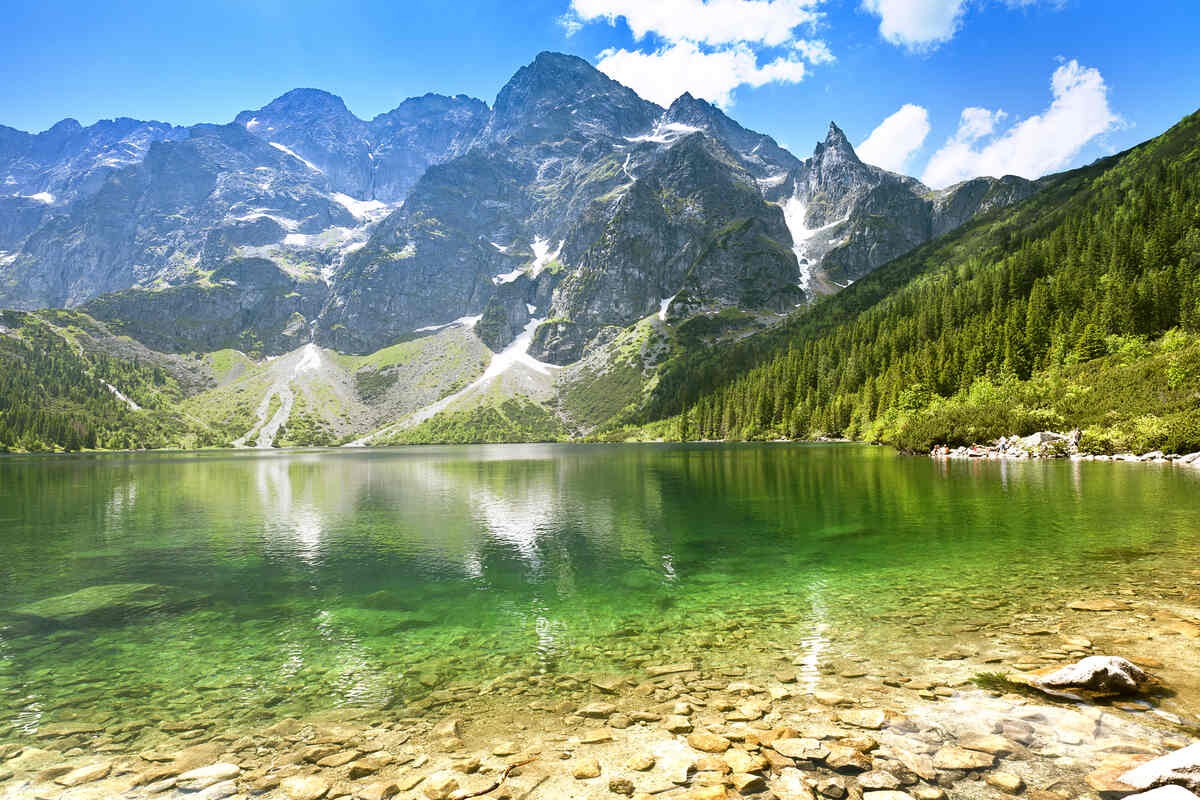
Gothic Gate of Olsztyn
Olsztyn is in a beautiful place surrounded by wild nature. As you might expect, the capital of the Warmisko-Mazurskie Province has a large forest complex and several lakes.
Gothic and Art Nouveau buildings are surrounded by greenery, which makes a nice contrast with the colors of the town. Visit the official travel site for Olsztyn to find out more.
St. James’s Basilica is an impressive brick building that stands tall over Olsztyn. It gives the town the dignity of a bishop’s seat, which it has been for more than 600 years.
The Olsztyn Organ Concerts are a great time to hear how great the Basilica’s acoustics are. The town grew up around a watchtower built by the Teutonic Knights in the 14th century.
The great astronomer Copernicus, who lived here for many years as a high-ranking church official, has close ties to the town’s history. His tools for studying the stars are kept in the castle. The Planetarium and the Astronomical Observatory are also open to the public.
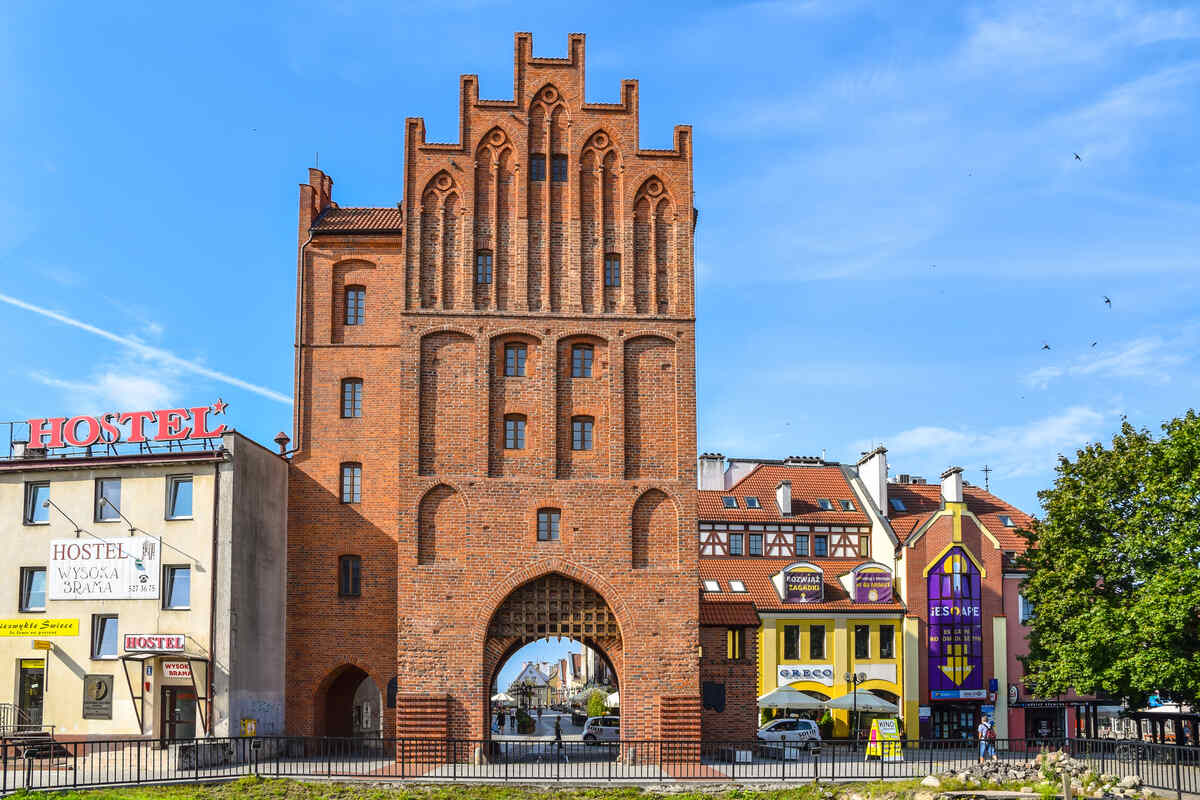
Copernicus Monument
Copernicus and Curie are two of Poland’s most distinguished scientists. However, both are frequently misattributed to other nations. Poland has erected monuments and museums in their honor to correct this misconception, such as the Nicolaus Copernicus Monument.
Copernicus was a pivotal figure in the advancement of human knowledge of the universe. He conceived the idea that the Earth orbited around the Sun.
This theory contradicted Ptolemy’s system, which had been prevalent for over a millennium and held that the Earth was the center of the solar system. Moreover, Copernicus’s theory starkly contrasted the Church’s beliefs.
At first, no one believed Copernicus’ assertion. Over time, however, the concept gained acceptance, and we now recognize it as the truth.
Even though Copernicus perished before his theory was accepted as fact, his legacy continues to be celebrated to this day.
The Nicolaus Copernicus Monument in Warsaw City features a colossal statue of him seated in a chair, gazing at the solar system model in bronze that dominates the plaza.
The statue is adjacent to the church containing Chopin’s heart, preserving a portion of another Pole frequently misidentified as French.
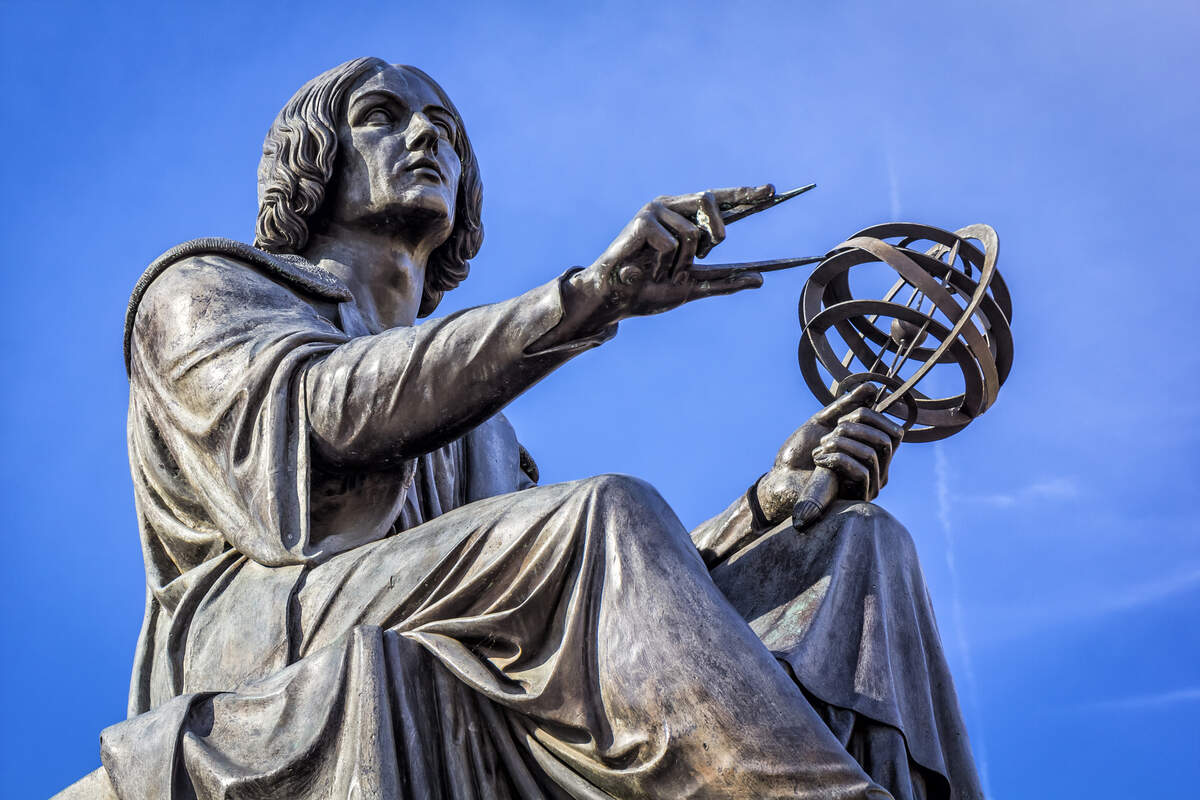
Bialowieza Forest
UNESCO has designated the Bialowieza National Park as a World Heritage Site because it contains the last remaining natural woodland in the European Lowland Region.
It is approximately 270 square kilometers in size and is located on the boundary of Poland and Belarus. Over 800 plant species, 8000 invertebrate species, 50 animal species, and 100 avian species are found there.
The European bison, which is the continent’s biggest terrestrial mammal, serves as the mascot for this particular park. There are approximately 500 people residing in this woodland, which is high on the list of things to see and do in Poland.
Explore the verdant forest in this stunning national park by walking or biking along one of the many trails, keeping an eye out for the various kinds of wildlife that live there.
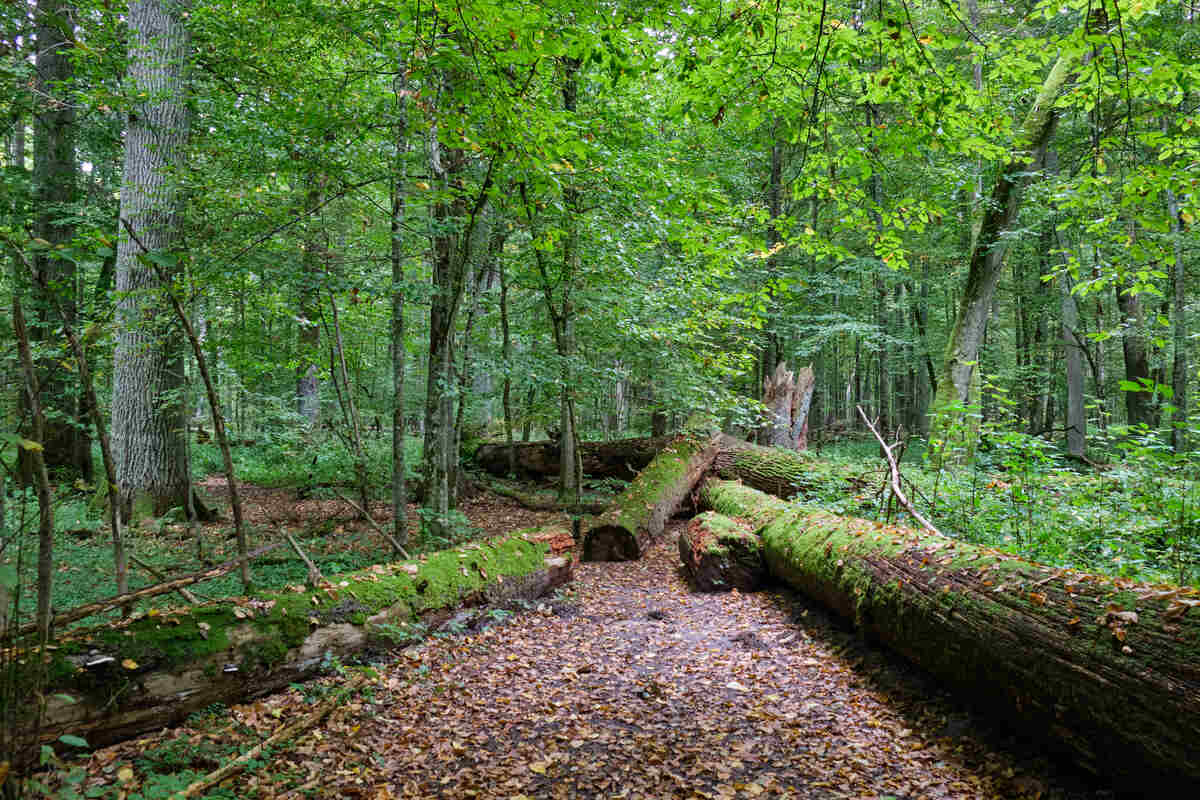
Wooden Churches of Southern Maloposka
Some of these buildings are hundreds of years ancient, and six have been designated as UNESCO World Cultural Heritage Site. None of them were built by famous builders. All of them were built by simple craftsmen.
The earliest is a 15th-century chapel in Haczów, which is constructed of fir timber and coated in shingles. In the chapel interiors, fragments of murals were discovered. The shingle-roofed chapel in Blizne is extremely valuable.
It was built around the turn of the 15th century and includes remnants of Gothic and Renaissance-style murals. The church’s harmonious shape has a unique, spiry roof.
Binarowa Church has a very valuable wall artwork showing scenes from the New Testament as well as a 14th-century carved wood Madonna figure.
The 15th-century chapel at Dbno contains many distinctive paintings, statues, and artistic works. The church’s internal decorations include valuable murals, baroque paintings, and statues.
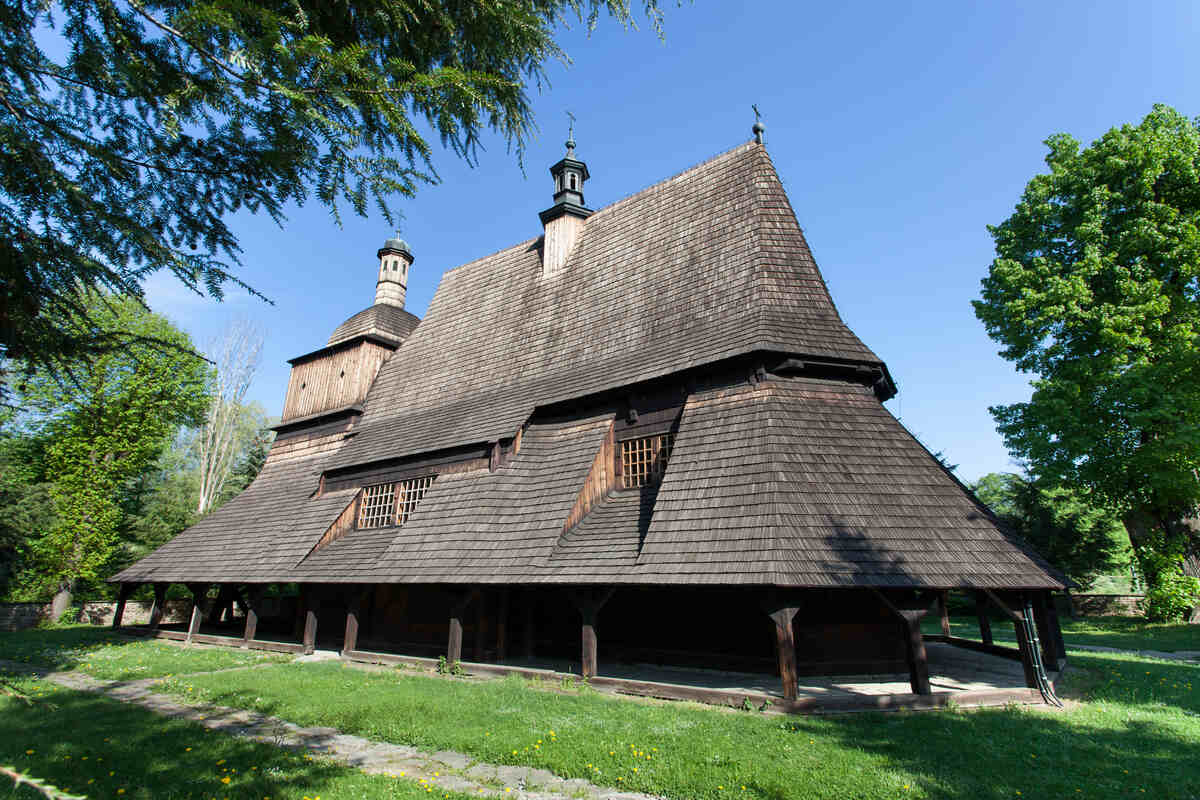
Centennial Hall in Wroclaw
Centennial Hall in Wroclaw is an iconic historic landmark located in the city center of Wroclaw, Poland. Built between 1911 and 1913, it was designed by Max Berg, making it one of the first modernist structures in Europe.
Centennial Hall is a UNESCO World Heritage Site, and serves as the centerpiece to an expansive park complex that includes a botanical garden, an amphitheater, and even a fountain court.
The main attraction at Centennial Hall is its rotunda-style structure which measures over 120 meters in diameter and stands over 25 meters tall. The design of this structure features reinforced concrete covered with ceramic tiling and topped off with a dome made of copper sheeting.
Inside the rotunda, there are two levels with balconies that offer 360-degree views of both the inside and outside of the building. Additionally, this area houses numerous historical artifacts from all over Poland.
The park surrounding Centennial Hall is just as impressive as the hall itself and offers many different attractions for visitors to enjoy. There are several gardens on-site featuring native plants from across Central Europe, including some rare species such as linden trees and meadowsweet herbs.
There’s also a large outdoor amphitheater where concerts are held during the summer. Additionally, there’s a fountain court with cascading water displays that light up in vibrant colors at night for beautiful photo opportunities, how cool!
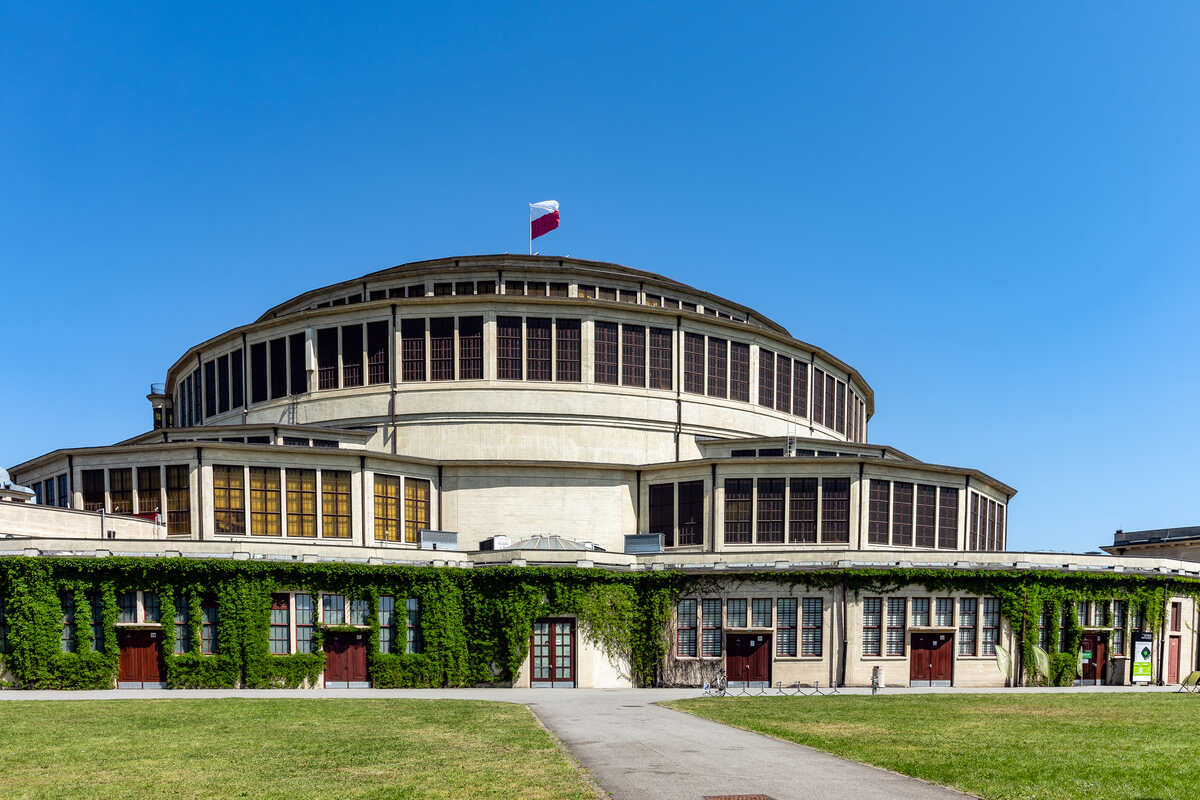
Lublin Old Town
Lublin draws people in with its interesting history, cobblestone streets, and colorful buildings. This lively city quickly becomes one of the most popular places to visit in Poland for a city break because it is full of museums, historic buildings, traditional foods, and exciting events.
The Old Town is one of the Jagiellonian dynasty’s crown jewels. The Trinitarian Tower, the one-of-a-kind Konopnica tenement house, the Musicians’ House, as well as several old palaces and small gates, bring to mind the Jagiellonian era and the great noble courts of that time.
But if you go off the beaten path and explore the side streets, you can find hidden little bakeries that serve cebularz, a local specialty. This buttered onion flatbread, which was just baked, is a great snack.
If you keep going down these streets, you might end up at the House of Words, which is a place for learning and a museum of types. It teaches people about poetry and art, old printing methods, and the history and accomplishments of Lublin’s printing industry.
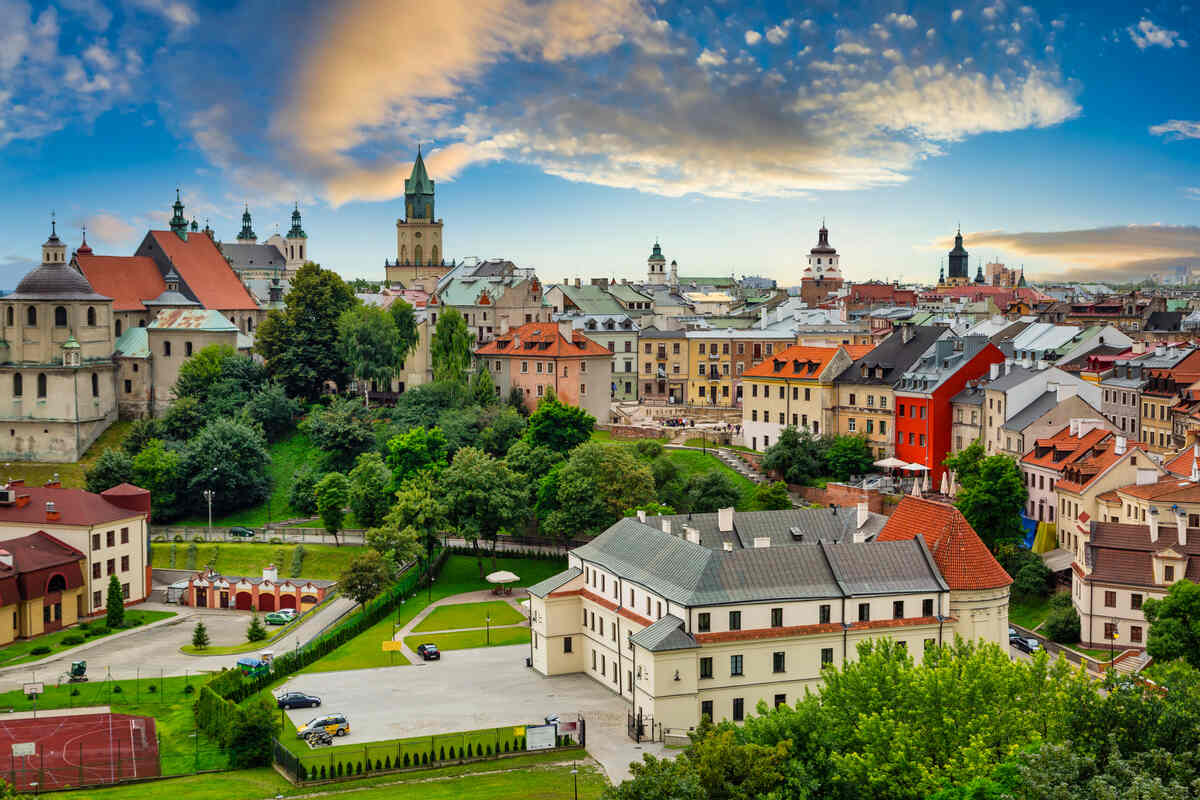
Poznan Cathedral
Set on Cathedral Island, Poznan Cathedral is an impressive and historic building located in Poznań. It is one of the oldest churches in the city, having been built in the early 12th century.
The cathedral is part of a complex that includes two other buildings, St Peter and St Paul’s Church and Poznan Basilica.
The architecture of Poznan Cathedral is a Romanesque-Gothic mixture, with its two towers still standing at the height of 72 meters. Inside, there are several different chapels dedicated to various saints and martyrs, as well as a large organ that dates back to 1737.
You can also explore the crypt which contains records dating back to the 11th century.
Poznan Cathedral has had numerous renovations over its long history but still retains much of its original character and beauty today.
It is a popular tourist attraction and historic Polish landmarks for Polish visitors and those from abroad who come to admire its architecture and learn more about this incredible piece of history.
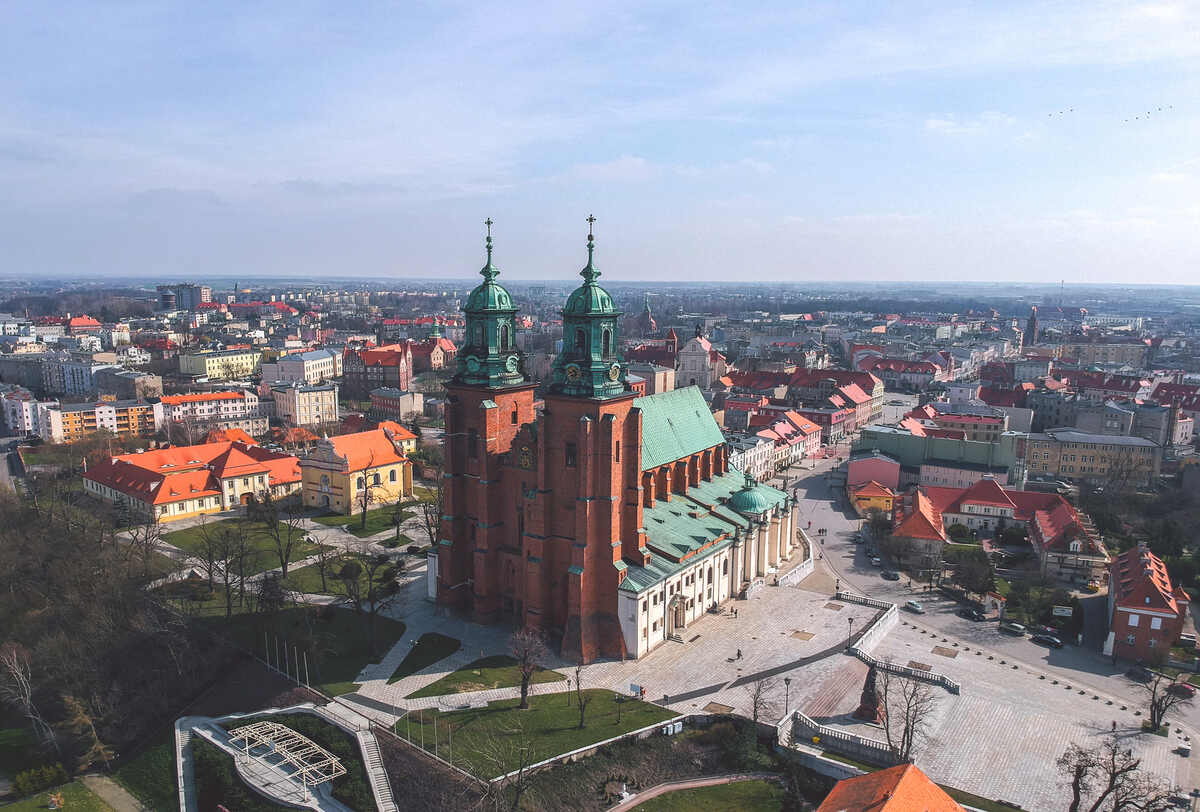
Zamość Old Town
One of the wealthiest individuals in history, Jan Sariusz Zamoyski, the Great Chancellor of the Crown, magnate and judge, was responsible for the conception and development of Zamość with a old town filled with beautiful buildings and a stunning historic centre.
Nowy Zamo was designed and built under the watchful eye of Bernardo Mornado, one of the most renowned Italian builders of the period. The expert, born around 1540, had been operating in Poland since 1569.
The commission to build Zamo culminated several projects he had already finished for King Batory and other Polish kings and magnates.
Zamosc, a Polish city with a rich history, was established in the 16th century and features Italian Renaissance architecture, fortification walls, and many preserved historic structures. The site’s stunning representation of Renaissance cultural and societal values earned it a spot on UNESCO’s list of World Heritage Sites.
Market Square, the brightly painted Armenian homes, Town Hall, the Armoury Museum, the Cathedral of the Resurrection, and St. Thomas the Apostle are just a few of the city’s most recognizable features.
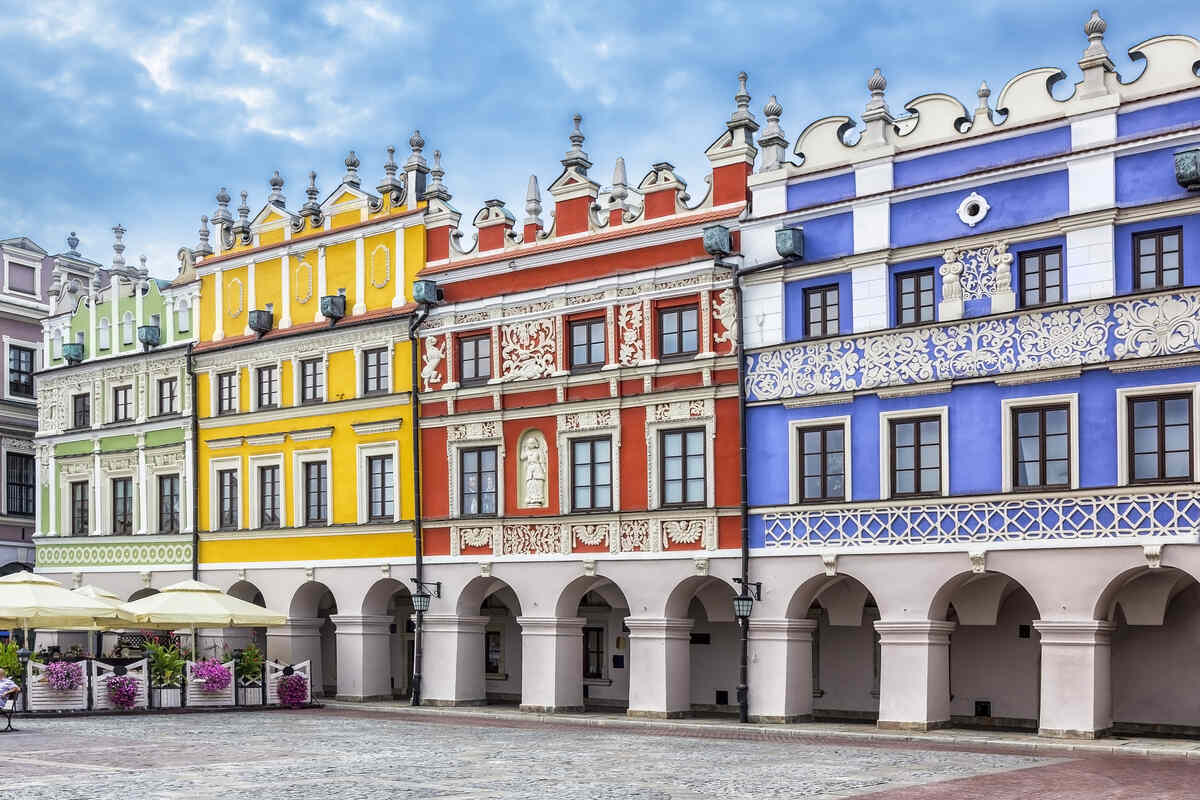
Oliwa Cathedral
The Oliwa Cathedral in Gdansk is renowned for being the “longest church” in Poland due to the height of its stunning construction. The cathedral was originally constructed out of wood.
This cathedral is widely regarded as an architectural masterpiece and a popular destination due to the Baroque furnishings that were constructed during the restoration process.
The cathedral is famous not only for the splendor of its furnishings but also for the organ that it contains; the organ is decorated with angels and stars, and the excellent sound quality of the instrument is certain to keep guests interested.
The current construction of this cathedral, which dates back to 1186, is a mixture of Romanesque, Gothic, and Baroque styles of architecture. The cathedral was originally established in 1186.
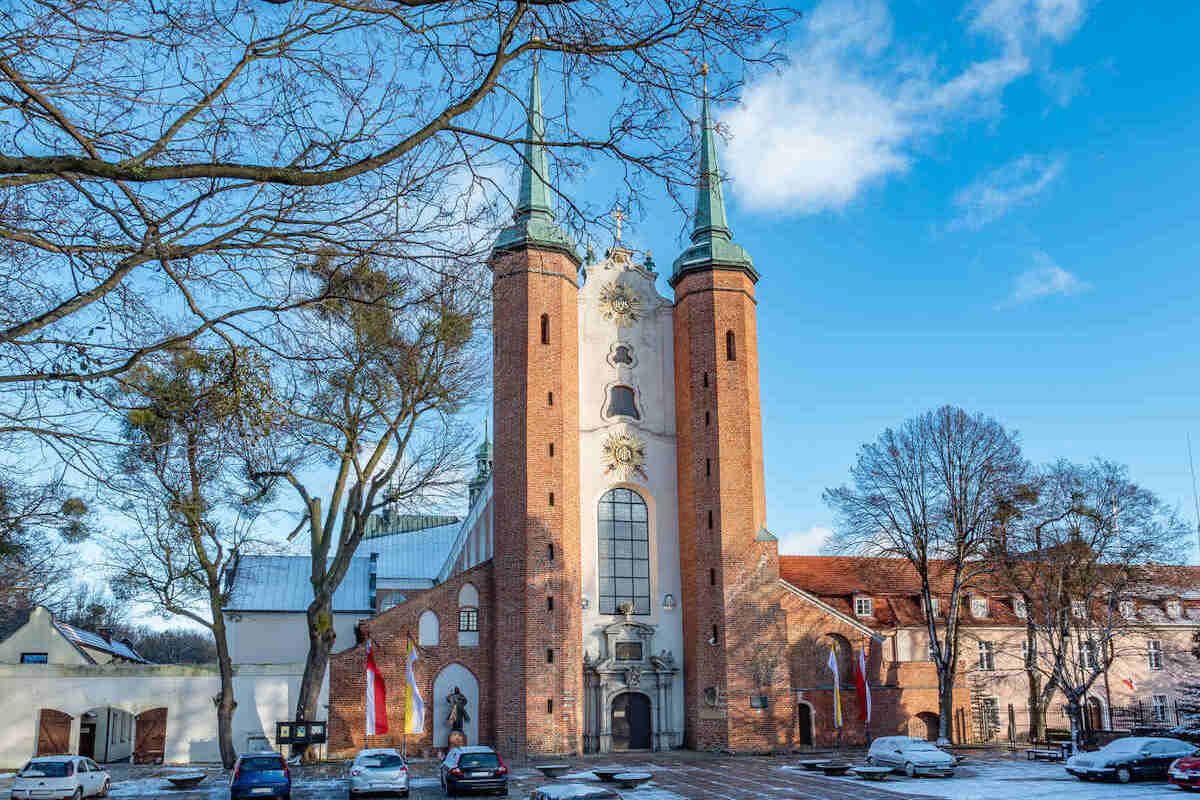
Chrobry Embankment
There is another natural beauty also to be found along the riverbanks. The “Chrobry Embankment” is an embankment that runs parallel to the river Odra and is approximately 500 meters long.
It was constructed between the years 1901 and 1921 and features picture-perfect, monumental structures.
Hermann Haken, who served as the over-mayor of Szczecin from 1878 until 1907, is widely regarded as the individual responsible for the entire region.
In addition to the Marine Museum, you’ll discover two pavilions, an observation platform with a sculpture of “Centaur Fighting Lapiths,” and a magnificent waterfall.
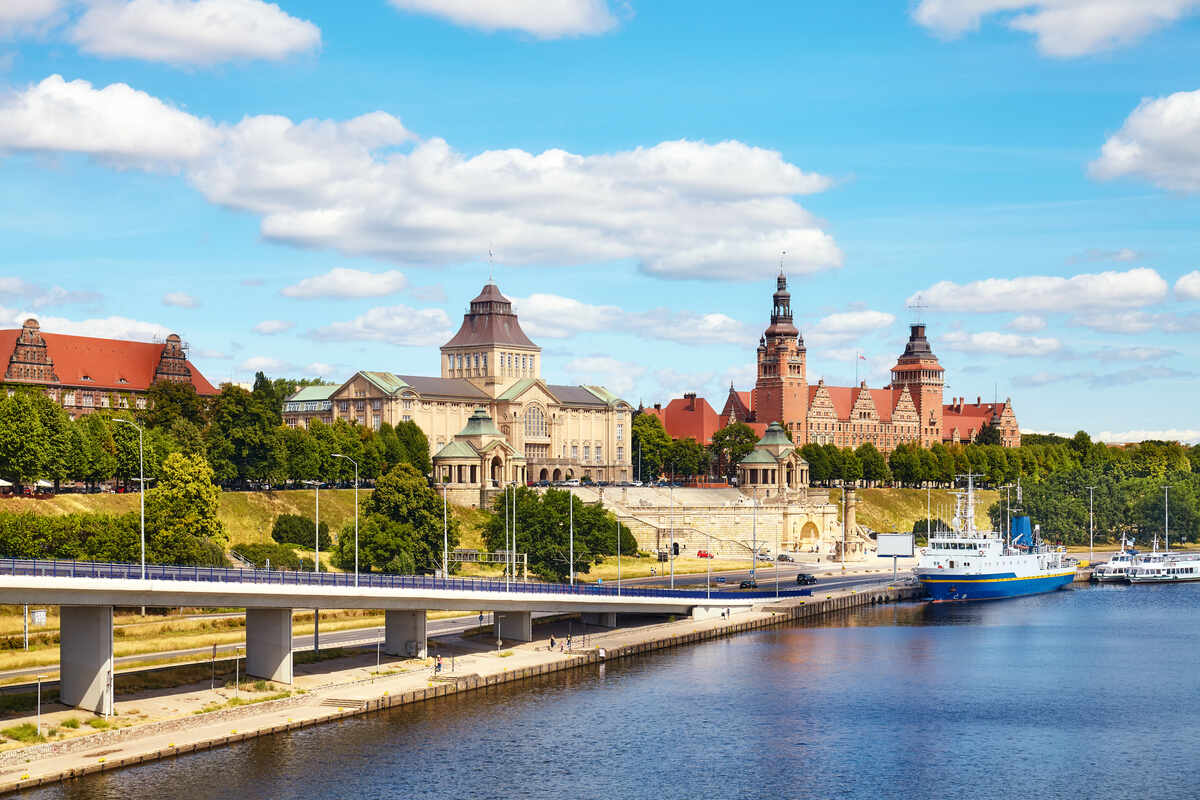
Warsaw Rising Museum
The Warsaw Uprising Museum is one of the most moving and powerful museums in Warsaw. The museum tells the story of the 1944 uprising against the Nazi occupation through a combination of video, photographs, documents, and personal testimony.
The exhibits are incredibly well done, and the museum does an excellent job of explaining the complex history of the ghetto uprising. The museum is also extremely accessible, with multilingual staff and plenty of information in English.
All in all, the museum is definitely worth a visit when visiting Warsaw if you’re interested in learning more about this pivotal moment in World War II.
Opening hours: Wednesday to Monday: 8:00 AM – 6:00 PM (10 AM to 6PM on weekends)
Entrance fee: 20 zloty
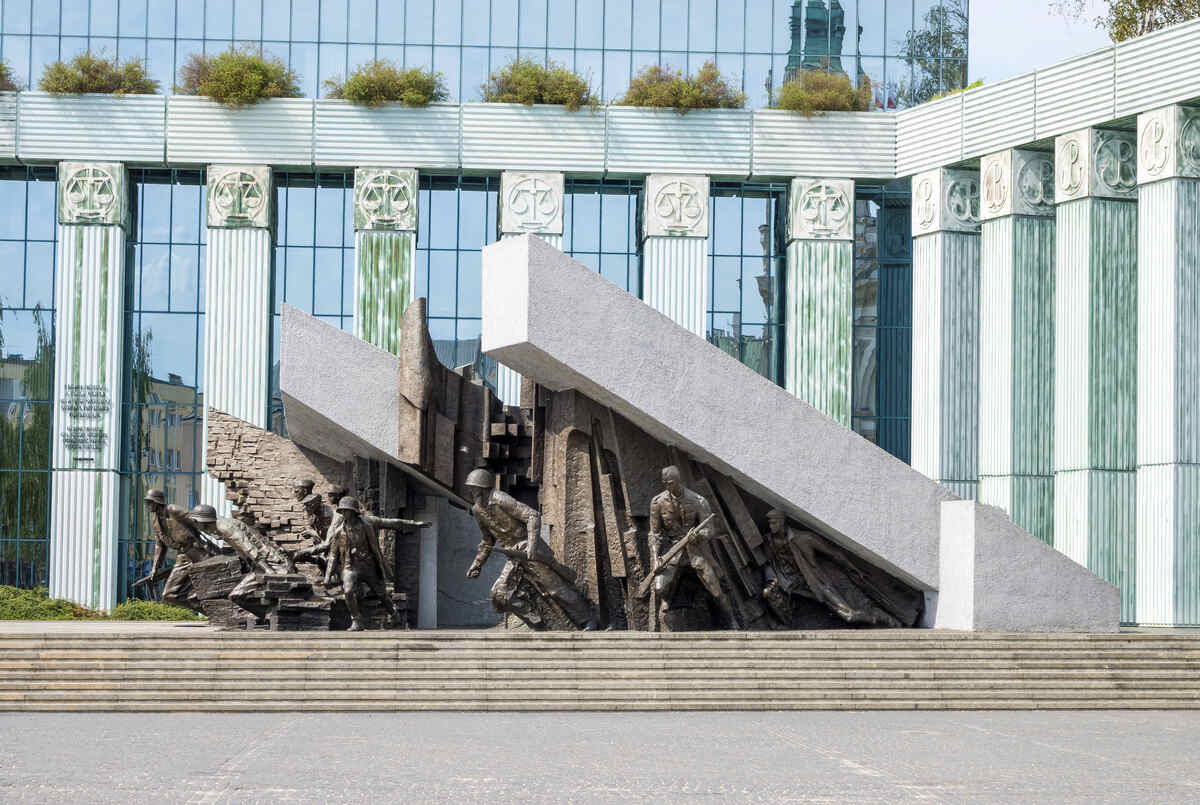
Krzywy Domek
Krzywy Domek, also known as the Crooked House, is located in Sopot. This unusual building, built in 2004, is part of a larger shopping center and its design mimics a funhouse mirror, captivating visitors with its distorted facade.
The significance of the Crooked House goes beyond just its odd appearance. The building holds cultural importance as a symbol of Sopot’s vibrant history and artistic spirit.
While in Sopot, a visit to the Crooked House is a must-see experience. The surrounding area is bustling with activity, with plenty of restaurants and street vendors offering traditional Polish cuisine.
The Crooked House is a delightfully peculiar destination with an electric atmosphere that is sure to delight visitors of all ages. Don’t miss the chance to experience this hidden gem in Poland!
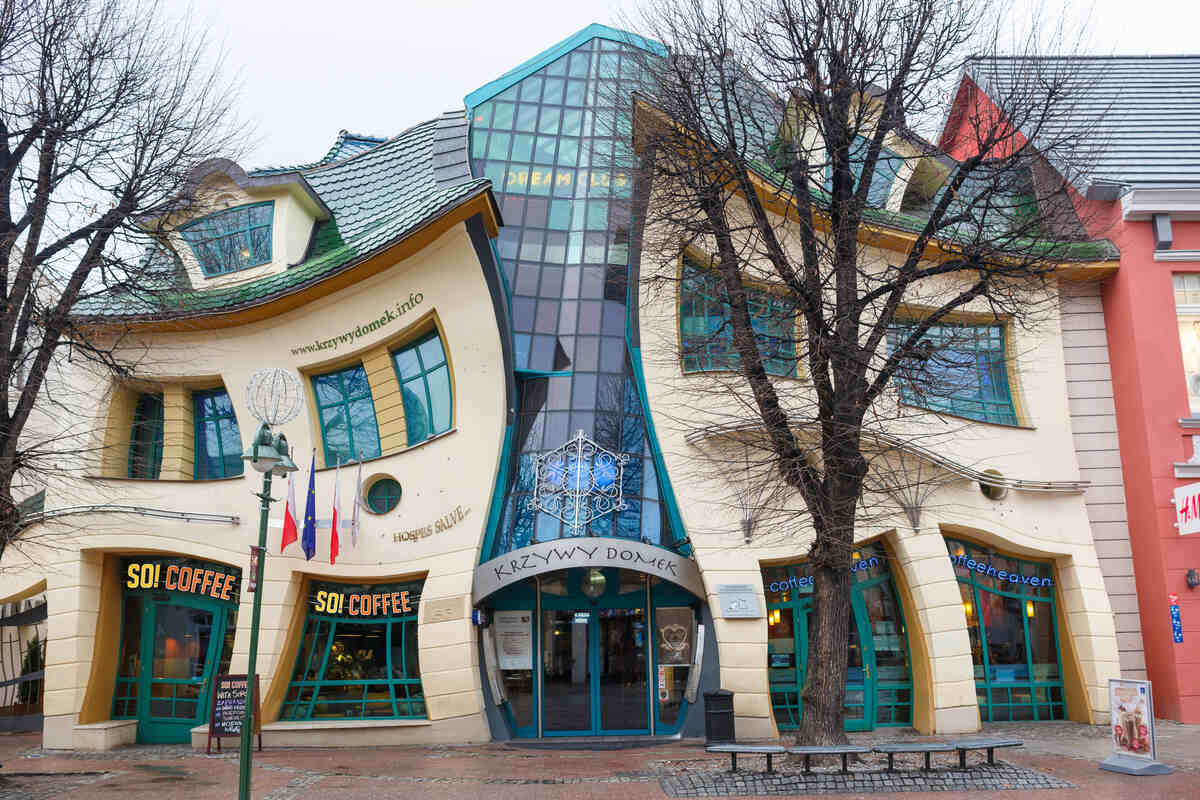
Wilanow Palace
One of the most famous Polish monuments, the Museum in the Royal Castle of King John III is a must-see for any visitor. This house is a stunning example of the synthesis of the Baroque style with elements of Italian and French buildings.
The Church, the King’s Library, the King’s and Queen’s Bedrooms, and the White Hall are some of the highlights of this exhibit. The castle is filled with art and other treasures that King John III collected during his lifetime.
Some of the items in his collection are pottery, textiles, statuary, artworks, and even gold and silver.
The Royal Garden of Light is an outdoor show featuring illuminated statues and vibrant lights. All seasons are welcome, this is the place to be for a truly unforgettable picture session.
The garden is free but the Royal castle charges 35PLN to get in, which is about $8. Definitely worth it for visiting one of the famous Polish landmarks in Poland’s capital city!
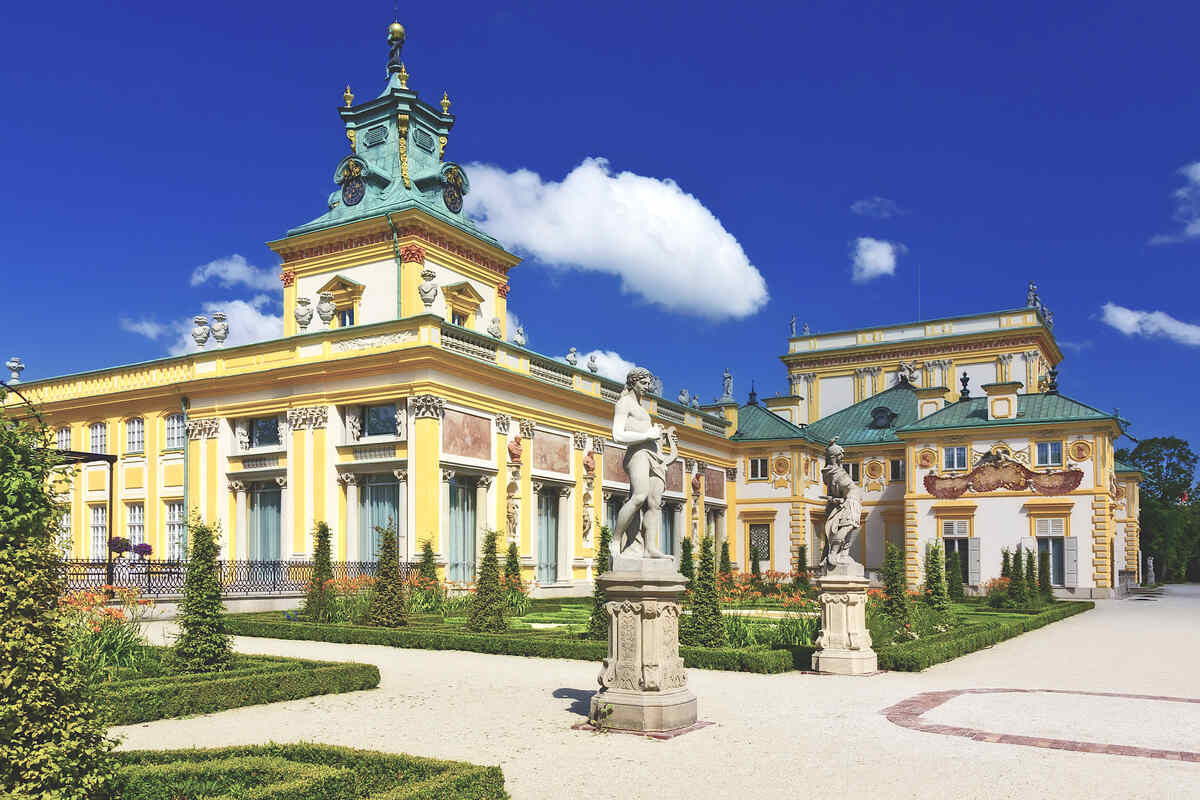
Hel Peninsula – Famous for the World War II Battle
Hundreds of kilometers of sandy shoreline, forest areas, charming little Kashubian fishing communities, and a plethora of viewing opportunities and water-based pursuits make Hel one of Poland’s most breathtaking locations.
The promontory has a long and illustrious past, going back to the Medieval Ages, and it is located immediately across the sea from Poland’s “Tricity” area.
In order to defend the shoreline from attackers, the Teutonic Knights constructed a fortification on the peninsula in the 14th century. During World War II, the stronghold was augmented and put to use as a jail.
From Gdansk, Sopot, or Gdynia, you can take a day trip to see these remains, which include German bunkers and anti-aircraft equipment.
During the summer, Northern Europeans can escape the cold and enjoy the balmy weather by visiting the Baltic coast, where they can swim in the clear seas and relax on the fine beaches.
The Hel Peninsula is a great place to go windsurfing, kite-surfing, and parasailing because the typical summer weather is between 19 and 22 degrees Celsius and there is a powerful Baltic breeze on the northern side.
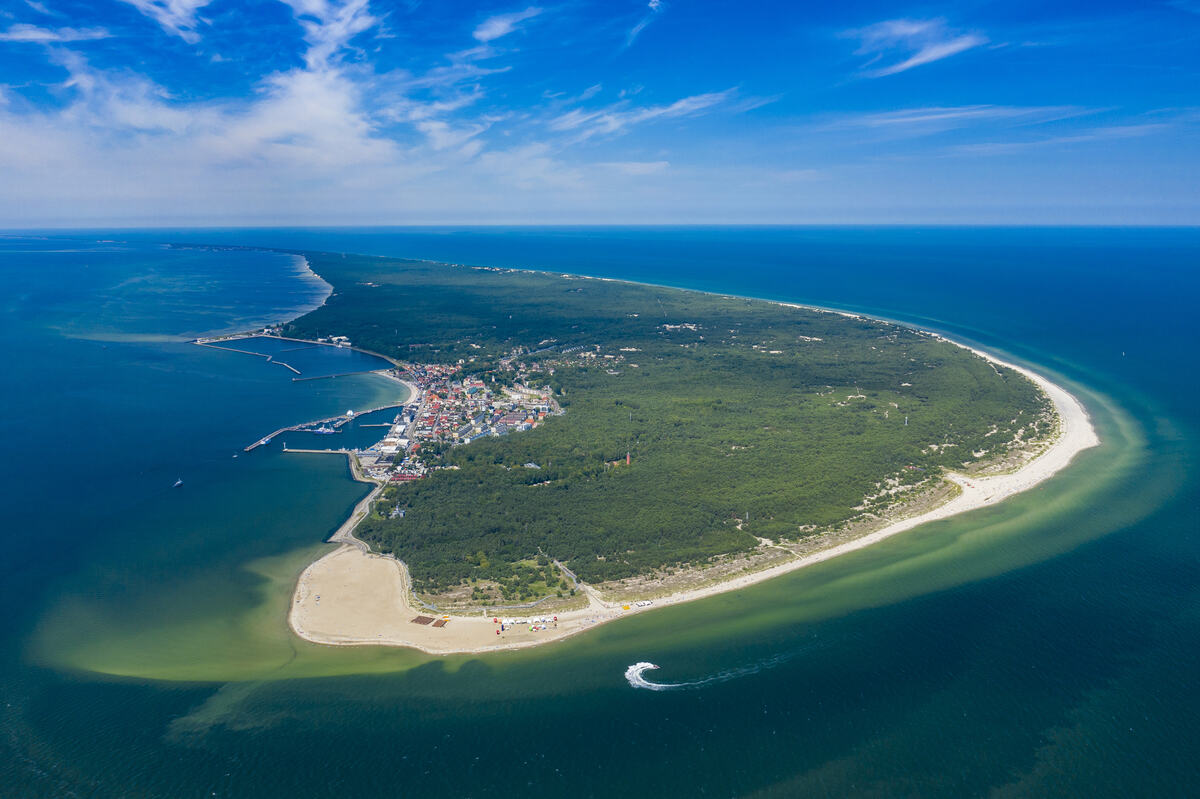
Famous Landmarks in Poland – FAQ
Now that you know all the most famous Polish landmarks, let’s answer some questions that first-timers in Poland often have, and that you may find helpful too.
Is Poland Worth Visiting?
Absolutely! Poland is a country with a rich history, fascinating culture, stunning landscapes, and friendly people. You can explore stunning cities like Warsaw, Krakow, and Gdansk, visit picturesque villages, or relax on the Baltic coast.
Poland is also renowned for its delicious food, beer, and vodka. Don’t miss out on visiting this exciting and diverse country.
How Long to Stay in Poland?
To scratch the surface and see the most famous landmarks and learn about Polish culture and history, I recommend staying at least a week.
If you want to experience more of the country’s outdoor activities, such as hiking, skiing, or visiting the beaches, then staying for 2 weeks is a good idea.
Best Time to Visit Poland
The best time to visit Poland is during the summer months from June to August when the weather is warm and sunny, and festivals are in full swing.
However, the country is also beautiful during the shoulder seasons (late spring and early fall), when the crowds are fewer, and the foliage around the different landscapes is stunning.
That being said, winter is also an excellent time to visit Poland if you’re interested in winter sports, Christmas markets, or enjoy colder temperatures.
What is Poland famous for?
Poland is famous for its stunning architecture, historic landmarks, picturesque landscapes in Poland, and delicious food (try Pierogi!).
It’s also known for the resilience and courage of its people, who have overcome numerous challenges throughout history.
Besides, Poland is famous for its Jewish heritage, Chopin, world-class art, vodka, and beer. Whether you’re interested in history, culture, or nature, Poland has something to offer every traveler.
Final Thoughts – Famous Polish Landmarks
Poland should not be overlooked if you are planning a trip to Europe, and is full of incredible landmarks in Poland you should visit!
There’s a lot for explorers and explorers-at-hearts to do and see in the country of Central Europe that’s located between the Baltic Sea and the Tatra Mountains.
Warsaw’s post-Communist and contemporary buildings make for an interesting contrast. There are many places of fascination, such as museums and magnificent palaces.
Krakow is worth visiting for its numerous institutions, eclectic cafes, and lively bars. The Biatowieza region is home to one of the last untouched old forests in all of Europe, making it a great destination for nature lovers.
You could also go hiking in the Masuria Lake District, which features two thousand lakes and a network of small waterways and quaint channels. And if you get tired of the Alps, the Tatra Mountains are a fantastic substitute.
These were all the best and most famous landmarks in Poland that you can’t miss while coming, so make sure to include them in your itinerary!



